build ing building services engineering
Sensing the health of your space


Müge Karasahin
SBEM – limited benefits for modern buildings
Chris Croly



Trends to watch for in 2023
Phil Kane
Optimising pump systems
Steve Schofield
TM68: 2022 Monitoring the quality of indoor air
Volume 62 Issue 1 January/February 2023
DESIGNED FOR QUALITY
Designed
For Process, Comfort and IT Cooling
Mitsubishi Electric’s wide range of energy-saving, and innovative Commercial Heat Pumps and Chillers has two new additions, the MECH-iS-G07 and MEHP-iS-G07. Manufactured to the highest quality, with a compact design and modular expansion capabilities, they are suitable for many different applications, from comfort to industrial and even IT cooling processes.
The MECH-iS-G07 and MEHP-iS-G07 achieve top-level energy efficiencies, in the most compact footprints in their category. The range features class leading SEER and SCOP performance. Built in Italy, it features the best of Italian engineering flair and Japanese “Poka-Yoke” designed in quality.
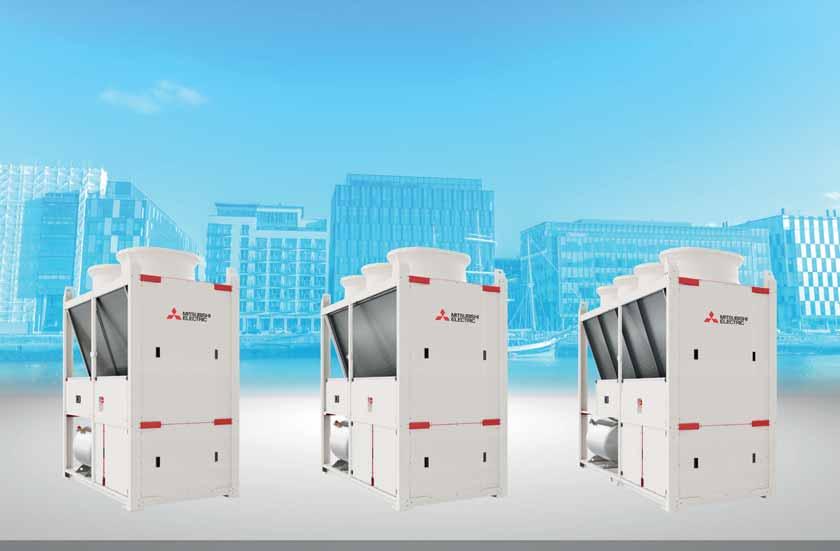
and built to the hightest standards for applications across Process, Comfort and IT Cooling.
ie.mitsubishielectric.com
The new MEHP chiller range from Mitsubishi Electric
Air Conditioning Chillers IT Cooling Heating Ventilation Controls Automation Robotics +353 1 419 8800
Lower GWP -66% GWPvsR410A Best in Class Sound Levels Hot Water up to 65ºC Cold water down to -12ºC
More pie in the sky?

While designating 2023 the European Year of Skills is to be lauded, it’s essential we don’t deceive ourselves into thinking that the problem is now solved. In recent years we have had a plethora of aspirational re- and upskilling initiatives, but most have failed dismally.


Somehow the processes by which we deliver such initiatives are convoluted to the point of being unworkable. There can be so many loops and hoops to be jumped through by would-be participants that it’s very often a turn off.
Even with regard to EU funding to support skills development, there are something like a dozen different EU schemes that governments can access. Why so many? Maybe we should start by upskilling the legislators and teaching them to keep things simple.
LIMITED BENEFITS OF SBEM




Building energy modelling

Editor: Pat Lehane


TM68: Monitoring indoor environmental quality – There are long-term consequences that we might face if we do not consider and monitor IEQ properly, says Eleonora Brembilla, Delft University of Technology and Chair of the TM68 Committee.

While it was a useful tool for expanding the scope of Part L, simplified building energy modelling (SBEM) is of limited benefit in accurately assessing the environmental performance of the next generation of buildings. 4


John Gibney


Joe Warren

first for Ethos The WELL Performance Rating takes real data captured through sensor technology or onsite tests and turns it into actionable intelligence. Ethos Engineering is the first in the world to achieve the rating for its headquarters in Dublin.

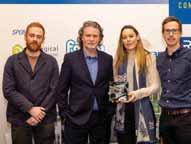
News and products 2 Dehumidifiers guide 20 Panasonic air-e 28 Car park ventilation 30 Mitsubishi ‘Applied’ 35 ISH Frankfurt+ 38 Galletti Art-U 39 Grant invest €13m 40 Galway University event 41 ‘EU Year of Skills’ 42 CIBSE YEN GoQuest 43 Xylem smart water 44 Optimising pump systems 45 Wilo goes platinum 48 ATC electric heating 49 Glen Dimlex System S 50 Instantor steel 55 Towards NetZero awards 56 Trends to watch 58 Factory lighting 60 LAI update 61 SLL lighting guide 62 Another side of … 63 Obtuse Angle 64 Building Services Engineering l January/February 2023 1 Contents Published by: Pressline Ltd, Carraig Court, George’s Avenue, Blackrock, Co Dublin. Tel: 01 - 288 5001/2/3 email: pat@pressline.ie www.buildingservicesengineering.ie
and
Design and Production
Advertisement Director:
Design: Pressline Ltd. Printed by: W&G Baird ISSN 2712-0198 Vol. 62 No. 1 © All contents copyright Pressline Ltd. EDITORIAL
Publisher
Editor:
8
6
6 56
52 24
14
1 41 3
38
3 63 5
WELL PERFORMANCE RATING
World
EI Engineer of the Year
William Fyans, Engineering Manager with SiriusXT, has been awarded the prestigious Chartered Engineer of the Year Award by Engineers Ireland.

Supported by Arup, the Chartered Engineer of the Year Award is selected by Engineers Ireland from the large number of engineers who achieve their Chartered title in a given 12-month period.
A graduate of mechanical engineering from Trinity College Dublin, he has built a notable career and reputation for pushing innovation through the development of novel technologies. One of the projects he has worked on includes the structural design of principal elements of the lifting equipment aboard the world’s largest ship, the Pioneering Spirit.
Willie Duggan Lighting Award
In an industry first, Willie Duggan Lighting has won an award at the prestigious LIT International Lighting Design Awards for its external lighting of Carton House, Co Kildare. It also received an honourable mention for its work on Blanchardstown Shopping Centre.

Willie Duggan Lighting is a family-run Irish lighting design company now over 80 years in business. In its third generation, it is run by sister and brother, Monica and Willie Duggan.
Willie, who was lead lighting designer on Carton House says: “We are blown away by the award. We have a brilliant team here in Willie Duggan and I am very proud of them. The façade at Carton House was an amazing canvas for playing with light and it means a great deal that our work is being recognised on an international scale.”
Scanlon Director of IAFs
The board of the Irish Architecture Foundation (IAF) has appointed Emmett Scanlon as the organisation’s new Director. Mr Scanlon will formally take up the role from the IAF’s incumbent Director, Nathalie Weadick, in May 2023.
Mr Scanlon is an architect in independent practice since 2006, prior to which he was Project Director at Grafton Architects. Additionally, he is Assistant Professor in Architecture at University College Dublin and was awarded a University Teaching and Learning Award in 2021.

Currently, he is Assistant to Curator Professor Lesley Lokko for the 18th International Architecture Exhibition, Biennale Architettura 2023 – The Laboratory of the Future.
Patrick Atkinson, CEO,
with Jack
champion and new Chadwicks Group ambassador. Chadwicks Group has entered a two-year partnership with Jack to support him on his journey to qualify for the Paris 2024 Olympic Games. As part of this partnership, Jack will act as a brand ambassador for Chadwicks through a variety of campaigns over the next 24 months.

Enterprise Excellence 2023
On 31 May 2023 Europe’s leading lean management event, Enterprise Excellence 2023, will once again be hosted by Lean Business Ireland. Venue for the event is the SETA Arena, Waterford.
The 2023 event will deliver a multi-stream keynote speaker line-up who will address the topics of:
• People, leadership and culture;
• Methods and systems;
• Fundamentals: lean and digital;
• Cultural change and lean transformation;
• Lean, green and sustainability.
Niklas Modig (pictured), one of the leading authorities within lean and operational excellence, will be a keynote speaker at the event.
For further information see https://eeireland.com/

2 Building Services Engineering l January/February 2023
NEWS AND PRODUCTS
Chadwicks Group
Marley, Irish boxing
Photo shows William Fyans, Engineers Ireland’s Chartered Engineer of the Year (centre), pictured with Joe Burns, Buildings Leader at Arup in Ireland (left) and John Power, President of Engineers Ireland.
The intelligent system solution for a smart sewage pump station.


savings with Wilo. with Wilo.
90% of today’s installed pumps are outdated 90% of installed pumps are outdated !
Our energy audits demonstrate how upgrading

Our energy audits demonstrate how .


Pioneering for You
www.wilo.ie @WiloIE
sustainability goals goals.
NEWS AND PRODUCTS
Waterford North Quays boost
The government has given approval for €170 million of investment in the Waterford North Quays Infrastructure Project, which will improve sustainable access between Waterford’s North Quays and the city centre.

Fay to chair Ibec group
Engineering Industries Ireland, the Ibec group that represents engineering businesses, has appointed Niall Fay, Director of Grant Engineering, as its new Chair.
Marking the appointment, Mr Fay stated: “The very real threat of climate change around the globe requires flexibility and agility from the Government and the engineering sector, collaborating to help reduce the dependency on carbon and manage industry activities in a more sustainable way.
“Furthermore, with international trade facing many new barriers and previously stable economies looking increasingly risky, the lack of an export credit agency is becoming even more of a serious problem for Irish engineering exporters. As the only material EU country that does not have a state-backed export credit insurance or agency, Ireland is putting itself at a competitive disadvantage against other EU competitors that can access such schemes and we are at risk of losing, long-established engineering multi-nationals with a base here.
Ronan O’Brien, CIF South East Branch Secretary, said “The North Quays development is a prime example of public investment encouraging private investment. In this case a €170.6m investment from the government will facilitate an estimated €350m private development.”
Brooks Group acquisition

Brooks Group has acquired Kildare Builders Providers Ltd in Kildare Town, bringing its network of outlets to nine in seven counties across three provinces.
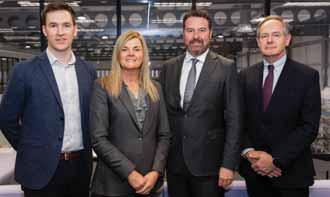
The company, which is one of the leading timber and builders’ merchants in the country, expects turnover to exceed €125 million for the year-end 2022. It plans to expand further both organically and by acquisition.
Brooks Group has been an institution in the Irish construction industry since its inception. The company returned to Irish ownership in 2021 when it was purchased by Murdock Builders Merchants, a family-owned business based in Newry.
“It is imperative that we underpin our competitiveness by putting in place a State-backed export credit insurance scheme and an Export Credit Agency to ensure Irish engineering businesses can compete on a level playing field on the international markets
Sirus ‘decarbonise with heat pumps’
Sirus had a large turnout at is “Decarbonise with Heat Pumps” lunch time seminar at The Marker Hotel recently. After brief introductions over lunch, Dara Connolly from ESB Smart Energy Services gave an overview on energy credits.
He was followed by Micheal Ó Conghaile from Sirus who gave a concise presentation on heat pumps, including high temperature CO2 heat pumps and magnetic-bearing heat pumps. He also suggested some natural heat sources and explored opportunities for heat recovery. This presentation was followed by a very engaging Q&A session with lots of technical questions facilitated by Felipe Ruiz Guerrero from Engie Refrigeration. Sirus were very pleased with the level of audience participation and thanked all for attending and engaging so proactively.
Those present included representatives from Axiseng, Cundall, Homan O’Brien, JV Tierney & Co, Jacobs, JAK Consulting Engineers, MALONE Group, PM Group, Ardmac, Winthrop Technologies, Diageo, Meta, MSD Ireland, Veolia Ireland and ESB.
4 Building Services Engineering l January/February 2023
Photo shows Micheal Ó Conghaile, Sirus pictured with Felipe Ruiz Guerrero, Engie Refrigeration and Keith Fitzpatrick, Sirus.
Shane Beirne, EII Project Executive, pictured with Pauline O’Flanagan, EII Director; Niall Fay, Director of Grant Engineering and incoming EII Chair; and Ed Byrne, Galco Steel Group Managing Director and incoming EII Vice-Chair.
Build warmth with Grant

Our complete integrated heating packages provide everything needed to build a highly efficient, warm and comfortable home.
Tailored to suit the homeowners’requirements, each Grant heating package is correctly sized and specified, free of charge, to achieve compliance, maximise efficiencies and provide long-term savings.
Packages feature the Grant Aerona3 air to water, air source heat pump, Grant hot water cylinders, Grant Afinia aluminium radiators and the Grant Uflex underfloor heating system. Smart controls are also available.

Trust Grant on the journey to warmth and comfort by sending house plans to heatpump@grantengineering.ie




Panasonic expansion
Panasonic Corporation is to acquire the commercial air-conditioning business of Systemair AB, the leading global manufacturer in the ventilation and commercial air-conditioning business. An agreement has been reached to purchase all outstanding shares in Systemair Srl and Tecnair SpA. In due course, it is proposed to acquire the business conducted by the air-conditioning sales employees in Systemair GmbH in Frankfurt.
By making Systemair’s three airconditioning companies its consolidated subsidiaries, Panasonic will establish new development, production, sales and maintenance structures for its commercial airconditioning business. It will also create higher value-added solutions in hot water supply and space heating, in addition to airconditioning, by combining the resources owned by both companies.
The deal only covers the chiller side of the Systemair business and will not affect the AHU business in which Panasonic will not be involved.
Cycle across Europe
ATP recently supported Irish-Canadian Eoghan McHugh on his cycle across Europe from Lublin in Poland to Dublin. Eoghan was cycling on behalf of MDS Solutions, the North American Distributor of Verano products.
As Irish distributor for Verano, ATP facilitated his arrival in Dublin with a leisurely cycle through the city to finish the 3800Km trip. Eoin’s objective was to promote the planting of trees in order to balance up the environmental impact of the building services industry.

The Project Earth cycle took six weeks to complete and raised funds for the tree planting programme.
Gramco water treatment specialists
Graham Fay, the waste water treatment and pump systems specialist, has many years experience in the sector and is now bringing that to bear on projects through Gramco, the new company he leads in partnership with his wife, Anne-Marie.

Gramco’s team of engineers and technicians are fully-qualified and represent expertise in water treatment, sewage treatment, pump systems, commercial rainwater harvesting and testing and monitoring. It also provides maintenance, aftersales, repair, installation and commissioning services.
Key strength is in devising customised solutions for projects in the commercial sector that involve unusual or difficult challenges. Essentially, Gramco specialises in innovation and in tackling projects for which there are no standard products or systems. Using its depth of experience and understanding of the sector means that it devises unique solutions that invariably set new benchmarks for specific applications across many areas.
Contact: Graham Fay, Gramco. T: 01 861 2201; 086 819 3059; E: graham@gramco.ie
Suir engineering
Suir Engineering, one of Ireland’s leading providers of mechanical, electrical and instrumentation engineering services, is to be acquired by private equity group, Duke Street. Suir employs 1,300 people, has an annual turnover of around €300m, and is headquartered in Waterford.
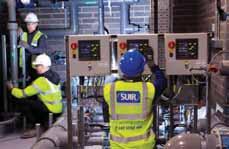
The transaction includes investment by the senior management team and will enable it enhance the services it offers to clients. However, completion of the deal remains subject to obtaining applicable regulatory approvals.
McGettigan returns to Hitach
Paul McGettigan has returned to Hitachi as Area Sales Manager for Ireland, having previously worked with the company for a number of years. Paul has over 25 years’ experience in the sector. Apart from his earlier stint with Hitachi, he has worked with a number of other leading companies and consequently has wide-ranging knowledge of the industry.
Based in Dublin, he will continue to develop sales of Hitachi’s cooling and heating products in the Irish market, with a focus on VRF, chiller and all DX products. Paul is also available to visit consultants’ offices to deliver CPD presentations. Paul said: “I am delighted to be back with Hitachi and am looking forward to renewing relationships with existing customers, as well as expanding our network throughout the country”. Contact: Paul McGettigan, Hitachi Sales Manager Ireland. Tel: 086 107 7274; email: paul.mcgettigan@jci-hitachi.com

6 Building Services Engineering l January/February 2023
NEWS AND PRODUCTS
Picture shows David Daly, ATP with Eoghan McHugh on his arrival at the ATP offices in Dublin.









The Kingspan Kooltherm provides an indication on heat loss, capital costs and the cost of lost heat, helping to understand the payback period in both cost Contact us to discuss carbon savings on your project: pipecarboncalculator@kingspan.com * BS 5422: 2022 (Thermal insulating materials for pipes, tanks, vessels, ductwork and equipment operating within the temperature range –40 °C to +700 °C – Method for specifying) Table 15A Base Level Thickness and Table 15B Enhance Level Insulation. CIBSE CP1: Heat networks: Code of Practice for the UK (2020). Please scan for more information. Understanding the Impact of Pipe Insulation on Operating Cost and Carbon Emissions Our new carbon calculator can help consultants to calculate the carbon emissions associated with the heat lost from pipework systems over the systems lifetime, Kingspan Insulation Ltd Castleblayney | County Monaghan | Ireland T: +353 (0) 42 975 4219 www.kingspantechnicalinsulation.ie ® Kingspan, Kooltherm and the Lion Device are Registered Trademarks of the
NEWS AND PRODUCTS
Kirby promotes diversity
Kirby Group Engineering has awarded bursaries to four female students at third level institutions across Ireland. The scheme forms part of its ongoing effort to promote gender diversity in the evolving worlds of engineering and construction.

The bursary recipients will benefit from:
• Full scholarship to cover the academic year 2022/23;
• Paid professional placements on some of Kirby’s engineering projects;

• Professional mentorship with experienced senior engineers;
• The opportunity to become Kirby’s ambassador at their third level institution.
One of the winners, Zofia Suchan, who attends Limerick IT, believes that it’s really important for female engineers to get opportunities like these. She said: “Seeing more females in the sector will help younger girls feel confident in choosing engineering as a career path. This type of visibility normalises women in engineering, and also provides a support network among females in the industry.”
Gyproc & Isover Ireland appoints Evans



Saint-Gobain has appointed Niall Evans Sales Director for the Gyproc & Isover businesses in Ireland. Niall previously held the role of National Sales Manager along with various other roles during his 23 years with the company.
RACGS 2023 Programme
Details of the forthcoming season’s RACGS events are as follows:
30 March 2023: Captain’s Drive-In, St Margarets Golf & Country Club. Sponsor: FSW.
27 April 2023: Captain’s Day, Knightsbrook Hotel Spa & Golf Resort. Sponsor: CAREL.
19 May 2023: Munster event, Killarney Golf & Fishing Club, Killeen. Sponsor: RDL.
29 June 2023: President’s Day, Powerscourt Golf Club (East Course). Sponsor: Burlington Engineering.
28 September 2023: Charity outing, Glasson Hotel & Golf Club. Sponsor: Mitsubishi Electric.
Kingspan carbon calculator
Kingspan Technical Insulation has introduced a new carbon calculator, helping consultants to understand how pipe insulation specifications can impact whole-life carbon emissions and operating costs associated with heat losses from pipework systems.

The Kingspan Kooltherm Pipe Insulation Carbon Calculator covers a range of system designs, pipe materials and diameters and operating parameters. It can help consultants to make more informed decisions about pipe insulation specification, and understand how choices may impact the payback period for the insulation, both in terms of cost and carbon emissions.
Kingspan Technical Insulation’s experienced team can work with users to help develop a custom calculation which is tailored to each project. They can then work to explore the different pipe insulation options to identify an optimal specification. Contact: pipecarboncalculator@kingspan.com
8 Building Services Engineering l January/February 2023
Pictured above is Rosa Condori, second year student at Limerick Institute of Technology (LIT) with Zofia Suchan, third year student also at LIT; Alison Cahill, third year student at Technological University Dublin and Ella Peare, third year student at South East Technological University.

























Your Heating Partner Wi-Fi Heaters Outdoor Heaters Bathroom Range atc.ie 01 467 8301 Digital Heaters Commercial Heaters Thermostats and Controllers
ATC Electric Heating CPD

ATC Electric’s heating technology CPD has been specifically developed for engineers and consultants and aims to cover a multitude of technologies that encompass modern electric heating systems.
In this CPD, ATC covers areas such as thermal oil-filled radiators, ceramic, storage heaters and panel heaters. Within these categories, it looks at key operating principles, compliance, control technologies such as TRIAC and PID control, and modern advances in smart communication.
In addition, it covers specification guidance for consultants, outlines the advantages of electric heating and compares it to other systems.
See www.atc.ie
My CIBSE Learning
My CIBSE Learning is the new host platform for CIBSE’s on-demand training which is accessible both via desktop and mobile devices. It has an improved modern user experience dealing with the following popular courses and modules:
• Ventilation Design;
• Commissioning and Testing of Mechanical Services;
• Introduction to Mechanical and Electrical Building Services;
• Hot and Chilled Water Pipework Systems;
• Fire Sprinkler Systems to BS EN 12845;
• Practical Controls for HVAC Systems;
• Energy Monitoring and Targeting. See https://www.cibse.org/training
‘Just Transition’ to decarbonisation
Liquid Gas Ireland (LGI) has published a report called Liquid gas – Making the ‘Just Transition’ more sustainable for rural Ireland. The report outlines how lower carbon and renewable fuels like liquid petroleum gas (LPG) and BioLPG offer a sustainable and cost-effective pathway to decarbonising rural homes and businesses. It makes a series of recommendations to Government on the need to transition away from oil and other high-carbon fossil fuels.
Included in the report is research commissioned by LGI outlining alternative lower-cost options available to help a typical Irish property achieve a BER up to B1. This is against the backdrop of the “one size fits all” approach by Government prioritising the installation of heat pumps which, for many older rural properties, are too expensive or practically unviable.
Updated Climate Action Plan 2023
The Climate Action Plan 2023 (CAP23) is the second annual update to Ireland’s Climate Action 2019. This plan is the first to be prepared under the Climate Action and Low Carbon Development (Amendment) Act 2021, and further to the introduction in 2022 of economy-wide carbon budgets and sectoral emissions ceilings.
The plan was unveiled in December 2022 with the supplementary Annex of Actions to be published early in 2023.
The plan implements the carbon budgets and sectoral emissions ceilings and sets out a roadmap for taking decisive action to halve our emissions by 2030 and reach net zero no later than 2050, as committed to in the Programme for Government.
Climate Action Plan 2023 sets out how Ireland can accelerate the actions that are required to respond to the climate crisis, putting climate solutions at the centre of Ireland’s social and economic development.
Instantor appointment
The Heating & Plumbing Division within Sanbra Group – home to iconic brands such as Instantor, Eirline, Kelso Agencies and Tucson Pumps – has expanded its senior sales team with the appointment of Neil Gaffney as Divisional Sales Director. Neil has extensive experience and a vast amount of knowledge of the plumbing and heating industry, and he will lead the company’s internal and external sales team while supporting the expanding portfolio of customers and products within the Division.

Speaking about his new role, Neil said:
“I am very much looking forward to my new role with the excellent team at Sanbra Group, and to contributing to the continuous growth of the business and working with the award-winning teams in Sanbra Fyffe and Kelso Agencies.”
10 Building Services Engineering l January/February 2023
NEWS AND PRODUCTS
CPD session underway at the ATC training centre.



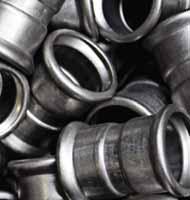




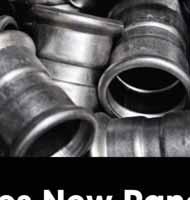
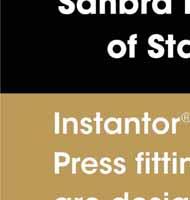
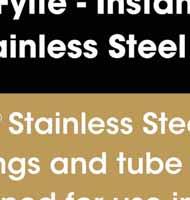
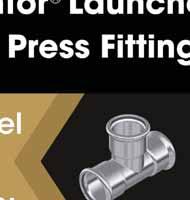


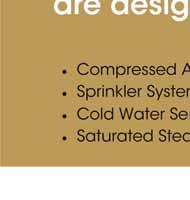
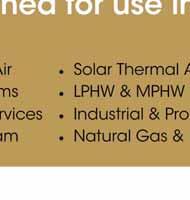
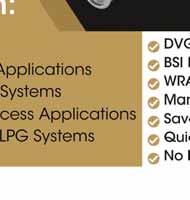










‘Sticking plaster’ no use
Ireland’s retrofitting targets could be in jeopardy after new figures showed that shallow retrofits in 2022 were below 2011 levels. Chris Collins, Country President of Ireland at Schneider Electric UK & Ireland says urgent action is required to combat rising emissions and energy prices in Ireland’s homes using a three-pronged approach –everyday actions, retrofitting and smart home technology.

Collins said: “Short-term incentives to reduce consumer demand for energy may be useful as a precaution against power outages. However, they are a sticking plaster on an even bigger issue. Over 60% of all the energy that is produced globally is lost or wasted before it is consumed.
“If we were to approach the crisis differently and tackle just a fraction of this shocking level of waste, then we could easily reduce consumption, and keep the lights on and thermostats up.”
Largest Belfast student project approved

Plans for a multi-million pound managed student accommodation project on an island site between Library Street, Little Donegall Street, Stephen Street and Union Street have now been recommended for approval by Belfast City Council planning officials.
The plans for the 795-bedroom scheme, brought by Mandeville Developments, are the largest to date in the city and located adjacent to Ulster University’s new campus. The accommodation will also introduce ground floor uses including café and retail space. The design is being led by local practice Like Architects with project managers WT Partnership.
Commissioning for today’s buildings
Construction Summit
The 2023 National Construction Summit will be held on Tuesday, 21 March at the Sport Ireland Campus, Blanchardstown, Dublin. Combining a conference programme, seminars and free workshops, the event will also feature an exhibition area, showcasing the latest products, services and technology for construction.
Building and engineering systems need to be safely delivered within specific cost, time and build-quality parameters. They also need to be operationally ready at handover; perform to meet the specified needs of the people that use, manage, operate and maintain them; and function safely and efficiently in the long-term.
In a world of accelerating technological advancement, increasing building complexity, tightening regulatory constraints, growing consumer demand for quality, surging environmental consciousness, and an urgent need to de-carbonise buildings, commissioning is one of the most important ways to achieve these outcomes.
The purpose of commissioning management is to ensure that commissioning is correctly executed – and that people, businesses, society and the environment all benefit as a result.
CIBSE’s CCM Commissioning Code: Commissioning management (2022) is intended to better represent the modern perception of what commissioning is, and to reflect current commissioning management best practices. It is an essential guide for all involved in commissioning.
National apprenticeship advice helpline
The new National Apprenticeship Office freephone advice helpline has advisors on hand to assist those with apprenticeship queries and looking to find the right apprenticeship to suit their skills and interests. Calling 1800 794 487 offers learners a direct means to engage with career advisors with in-depth knowledge of a wide range of current national programmes. There are 66 programmes geared around addressing critical skills gaps needed to steer Ireland’s future development and the freephone number is a great tool in helping to communicate the diversity of apprenticeship careers to all.

NEWS AND PRODUCTS 12 Building Services Engineering l January/February 2023
The Dimplex E-Heat system for apartments




The

Dimplex E-Heat is a complete, proven and comprehensive HVAC system-solution for domestic hot water, space heating and heat recovery ventilation, that supports delivery of NZEB compliance in new-build multi-unit apartment or housing schemes.


The E-heat System enables rapid installation and straightforward commissioning for contractors, is made up of proven, next generation, plug-andfor maximum compatibility and ease of operation.
Controlled by the Dimplex Smart Hub, E-Heat can also be combined with the Dimplex Control App, for complete end-user control and energyusage monitoring.
Enabling the transition to a sustainable world.

Dimplex Q-Rad is a smart electric heater. It knows precisely how long it takes to get to the desired temperature and when to turn off as it approaches that target temperature. This minimises the energy that it uses, while maximising comfort – keeping you warm for the lowest possible cost.
The Dimplex Edel hot water heat pump uses an integrated high-performance compressor to extract energy for hot water production from the external air using insulated duct work. Using up to three times less electricity than direct acting water heaters, it produces renewable energy to aid building regulation compliance.
The Xpelair heat recovery ventilation system is key to a healthy home, designed to combat condensation, mould and pollutants to ensure the air you’re breathing is clean, fresh and healthy. Recovering up to 90% of the heat from the stale air leaving the building, ensuring a continuous fresh air supply while maintaining the maximum efficiency for the building and its occupants.
innovative heating, ventilation and hot water solution for NZEB compliant, new-build apartment schemes.
1
2
3 Visit www.glendimplexireland.com for more information on our heating solutions. Email: salesireland@glendimplex.com or call: +353 (0)1 8424833
Simplified Building Energy Model



Prior to the introduction of SBEM (Simplified Building Energy Model), Part L of the Building Regulations relied largely on the setting of minimum fabric insulation requirements to reduce heat losses from buildings during the heating season. As consecutive revisions of Part L were introduced, insulation levels increased, and later air permeability targets were introduced. As fabric elemental performance increased, other aspects of design such as solar gains and system efficiencies became dominant in defining building energy performance, writes Chris Croly, Building Services Engineering Director, BDP (inset).
SBEM was introduced to capture some of the more complex interactions between heat gains and losses from the building fabric. SBEM also allowed the energy implications of basic system selection and design to be considered. The method attempted to introduce some flexibility in design by comparing the performance of a proposed building with that of a reference building with fixed fabric properties applied.
While it was a useful tool for expanding the scope of Part L, it is also of limited benefit in accurately assessing the environmental performance of the next generation of buildings. A further refinement of SBEM targets is likely to be ineffective as the method is not designed to assess the modern techniques that are
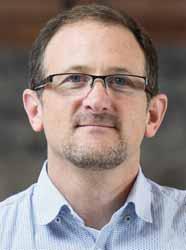

14 Building Services Engineering l January/February 2023
required to further improve building performance.
The method has a number of wellestablished limitations and these are as follows:
The method actively excludes the largest source of carbon emissions from buildings. The selection and usage of equipment such as computing and audio-visual equipment in buildings often contributes to over 80% of their total energy usage. The philosophy traditionally applied is that the energy performance of buildings should be judged in isolation from the end-user equipment that they contain. Buildings can, however, no longer be divorced from their content when their content has become the driving indicator of their overall carbon impact.
In buildings that contain active cooling, the end-user equipment strategies applied also have a direct effect on cooling demand. This is not addressed by SBEM and the actual cooling load of two buildings may vary by more than a factor of two, while SBEM reports identical estimates of cooling energy. SBEM is agnostic to the size of the cooling plant actually installed.
If the carbon impact of buildings is to be reduced notably beyond current practice, it is essential to address loads that are housed within buildings.
SBEM is not currently capable of considering many of the modern techniques required to further reduce energy usage in buildings.
Techniques such as heat pump driven heat recovery, free cooling, energy storage, mixed system strategies and parasitic load reduction are not addressed by SBEM. While SBEM could be patched to address some of these issues, many are too complex to easily include within the SBEM calculation. Embodied energy constraints limit further development of SBEM.
In well-designed buildings, the energy lost through the building fabric has reached a practical limit. In buildings with a heating bias, the addition of further insulation would typically increase the embodied energy of the structure at a higher rate than
the energy saved. In buildings that combine heating and cooling loads, SBEM already achieves a reasonable balance and leaves little scope for further fabric refinement. The method is unnecessarily time-consuming to implement relative to Its benefits.
Much of what is achieved through the use of SBEM could be achieved for modern buildings by following a number of simple rules. Many of the complexities of the SBEM calculation result in modest variations in the results achieved.
The method offers limited support for design flexibility and innovation.
The method does not support many flexible and innovative solutions to lowering the carbon impact of buildings as it is built around a set of assumed solutions to the main sources of carbon emissions associated with buildings. Some of these assumed solutions have already been superseded by advances in technology. Building design is advancing at a faster rate than the rate of update of the calculation method.
The method doesn’t consider occupant density.
The energy usage within two hotels, for example, could vary by over 100% while receiving identical assessments from SBEM. This is because there is no consideration of the area used per person served. SBEM actually rewards the inefficient use of a building area by increasing the area of the reference building in proportion to the design proposal.
The method contains a number of known loopholes.
One method of easily improving an SBEM result is to use a water-to-water chiller with a dry cooler as SBEM requires only the efficiency of the chiller to be entered. This means that the fan and pumping energy used by the dry cooler is excluded from the calculation. The equivalent fan and pump (compressor) energy would be included if using a chiller with integrated heat rejector. Known loopholes such as this are actively exploited.
Updating SBEM
The useful life-cycle of SBEM could be extended by updating the calculation to address some of the elements excluded. The update would be complex, and the calculation would not be inherently futureproofed. The largest carbon impact in buildings (end-user energy) would also remain unaddressed.
Ultimately, the SBEM calculation method is designed for a different generation when basic fabric performance issues were a key driver of building performance. The performance of modern, well-insulated, airtight buildings with optimised glazing areas is no longer defined by deviations in fabric performance and a tool that is tuned to differentiate fabric performance is of limited future application.
The tool may continue to be of benefit in the assessment of the performance of older buildings.
Level 5 Simulation
It has long been proposed that replacing the SBEM calculation with full dynamic simulation would allow the inclusion of advanced solutions to be more accurately assessed.
The process involves creating a dynamic simulation of a refence building and the actual design in a similar manner to the technique used with SBEM. The designers are then given the flexibility to adjust and tune the design of the actual building design.
Unfortunately, the flexibility of the method proved to also be its weakness. Dynamic simulation is very susceptible to the manipulation of outputs through the adjustments of inputs.
One solution is to fully define consistent inputs for both the reference and actual model but that ultimately defeats the purpose of the method, limiting its usefulness to simply offering a more detailed assessment of fabric thermal performance.
The very flexibility offered by the software unfortunately limits its usefulness as a tool for standardisation. The method also fails to address end-user energy or
Building Services Engineering l January/February 2023 15
the difference between theoretical and actual building performance.
Monitored energy usage limitations
Ideally, Part L would ultimately be replaced by a system that judges a building’s energy performance based on its actual monitored energy consumption, in addition to the theoretical performance of the fabric and systems design.
Once minimum construction standards are achieved, the poor performance of buildings could be addressed through an extension to the principles of smart metering. The energy tariff applied could increase as the relative usage increased, rather than the current norm where larger energy usage is bizarrely often rewarded with a lower tariff.
While addressing actual energy consumption is logical, it may not be politically acceptable and is potentially open to misuse as a taxation tool.
Installed load moderation
This is a new concept which proposes that a building’s energy performance is judged based on two key metrics as follows:
• The installed plant load for the building;
• The total installed power connection to the building.
There is a very strong correlation between the minimum size required for the above metrics and the actual energy consumption of a building. It is hypostasised that the
correlation is much stronger than that between an SBEM result and a building’s actual energy performance as the method targets the actual outputs of interest instead of an interim indicator.
The outputs selected are a function of the following:
• The fabric performance of the building;
• The type and efficiency of the installed systems;
• The end-user equipment installed;
• The control and operation of both equipment and end-user loads.
The method would be implemented by setting a maximum installed systems load (heating, cooling, hot water, fans and pumps) value for each building type, and assessing a building’s performance on its installed load. An additional performance metric would be applied for the overall building connected (non-renewable) load.
These targets set would be combined with a number of simple existing constraints on key fabric element thermal performance, solar gains and systems as detailed currently within the existing Part L. This approach offers a considerably simpler and more direct solution than SBEM to assessing the total operational carbon impact of buildings.

While the simplicity of the approach may lead to the assumption that it cannot address the complex issues described above, most of the limitations of SBEM benefit from this simplicity as follows:
Flexibility and innovation
There is no constraint on the calculation tools, or the innovations used to reduce building loads, because the result rather than the inputs are assessed. Designers are free to use any design technique or tool they deem most appropriate for the building.
Occupant density
The installed load target can be specified in two forms. The target would, in some cases such as offices, be expressed in terms of building area where it is the key metric of interest. Where occupancy served is the primary metric of value, such as hotels, the figures could be expressed in terms of the number of beds provided. This method penalises the production of buildings that are inefficient in the use of space.
Time
The method is much quicker and easier to implement than SBEM as it does not require bespoke software to be developed and maintained. Nor does it require an additional design task so this frees up designers to concentrate on building design.
End-user loads
End-user energy use would no longer be divorced from the building’s carbon impact as all energy consumed therein is considered.
Input bias
The methodology is less susceptible to input bias and is therefore less open to manipulation of the result achieved. The inputs become irrelevant as only the output is assessed.
Performance gap
The solution would be to address the perceived “performance gap” as buildings that fail to achieve the design load would simply not be fully operational at handover until their design flaws were rectified.
Renewable energy limitations
The trading of renewable energy with energy efficiency occurs naturally within the method. Designers could use renewable energy to reduce installed loads. The method only considers carbon emissions and not the source of their reduction, which is left entirely to the designers.
Limitations of load moderation method
As with any method that is applied to a large number of buildings, there would be
16 Building Services Engineering l January/February 2023
Schematic showing the difference between the SBEM Method, Monitoring Energy Method and Installed Load Method.
complexities and exceptions to be addressed. However, the method appears fundamentally less susceptible to complexity as many of the details can be referred to building designers where they are best addressed.
As with SBEM, it would be necessary to address the concept of process loads. The view could be taken that most process loads can be addressed simply by requiring the design team to use further energy saving methods and renewables to address any issues.
It would be necessary, however, to exclude some process loads for some building types. The principle behind the definition of process loads should be clearly defined.
The method automatically deals with buildings that have extended periods of operation as it is the connected load and not the energy usage that is directly constrained. It is reasonable to extend the energy used when providing an extended service.
The method proposed has a limited effect on the control of parasitic losses, but it does reward strategies that use energy storage to improve the time of use response of energy systems.
There is a risk that an end-user could upgrade systems after completion to bypass the method, but this is also a risk with the current SBEM method. The requirement to routinely update the certification would resolve this issue. As the method is much simpler than the SBEM method to implement, the provision of regular updates would not require the same overhead.
Renewable energy
The current version of Part L requires the provision of a set percentage of renewable energy from on-site sources. This proposal was often debated as the end-goal is to reduce the carbon impact of a building, and reducing energy demand is of similar (if not greater) value as an alternative strategy to using renewable energy. Part L tried to address this issue by adjusting the renewable contribution with a step change allowance based on the SBEM result achieved.
The installed load method would address the issue automatically as the designers have the option of using renewable energy generation (combined with storage or load modulation) to meet the capacity limits set for the electrical connection.
An on-site renewable requirement could, however, also be included. The difficulties with varying site constraints could be addressed simply be defining the required renewable contribution relative to the site footprint, instead of the current method of using the building area. Defining renewable energy as a percentage of usage as is currently used is problematic as it does not compensate for site opportunity.
Any future method should exclude the consideration of heat pumps as a form of renewable energy. The designation of a heat pump as a renewable energy system was a useful transitional arrangement but heat pumps are not renewable energy sources by definition. They are now a standard solution for almost all buildings rather than an option, and the setting of base electrical import limits should assume the application of heat pumps (or equivalent).
Any renewable energy requirement should exclude sources of significant local pollution or traffic congestion.
Energy labels
While SBEM continues to be a reasonable method of assigning energy labels for older buildings, it has proved impractical for new constructions and refurbishments. Almost all new buildings of the same type achieve the same energy label, irrespective of their actual performance. There is inadequate resolution within the system to differentiate between buildings.

With an upgraded energy performance
requirement, and more importantly developments in lighting efficiency (which significantly influences the SBEM result), all buildings are likely to achieve an A2 rating by default when using SBEM.
As it would be confusing to recalibrate the labelling system, the logical option is to sub-divide the A category. The subdivision would have limited meaning if trying to differentiate by using SBEM but, if using the connected load method, subcategories could easily be used to regrade the labelling system by sub dividing the A category.
Conclusions
The energy performance of new buildings has reached the point where continuing to focus on improved fabric performance will result in rapidly-diminishing returns. It is necessary for the development of any future method used to accept that end-user loads are the largest driver of energy consumption in buildings, and that a building’s design can no longer be considered in isolation of its content.
An innovative change of approach is required to address this reality and the defining of building performance based on installed loads is one potential alterative method of achieving this.
The method offers many advantages and encourages designers and building users to work together to achieve new, flexible solutions to reducing the carbon impact of buildings.
Building Services Engineering l January/February 2023 17
Everything you need to keep glowing





Say hello to the Energy range








Glow-worm’s Energy boiler range offers attractive modern design, easy-to-use interfaces and a wide choice of models and controls. Its lightweight, compact construction makes life easy for installers, while its long-lasting, quiet performance is a hit with homeowners too.


Energy Combi
•ErP A-rated for efficiency
•Compact size allows installation flexibility, H700mm W390mm
D280mm
•High efficiency
•Low running costs
•Outputs – 25kW, 30kW or 35kW
•Rear flue option
•“Quiet Mark” approved

•Aluminium heat exchanger
•Modulating Grundfos pump
•Up to 10 metres flue length
Energy Regular
•ErP A-rated for efficiency
•Outputs – 12kW, 15kW, 18kW, 25kW or 30kW
•Compact size/cupboard fit, H600mm W375mm
D280mm
•Rear flue option
•Low energy bills
•Easy to maintain
•Up to 10 metres flue length
Energy System
•Outputs –12kW, 15kW, 18kW, 25kW or 30kW
•Compact size, H700mm W390mm
D280mm
•Rear flue option
•ErP A-rated for efficiency
•Quiet Mark approved
•Easy to fit and install
•Modulating Grundfos pump
•Low running costs
•Up to 10 metres flue length




Combi
• Stainless steel heat exchanger
• User-friendly display for quick commissioning
• Optional analogue clock
• Combi boiler available in 24kw & 28kw out puts, NG & LPG




• 25mm spacer frame to allow fitting in standard 300mm cupboard

Dublin +353 (1) 630 5757 • Belfast: +44 (28) 90 36 55 55 • www.cfquadrant.ie
Compact
COMING SOON
HUMIDITY
Lowering the humidity in a room can be a complicated task. The drying of air can have a dramatic impact on its temperature and, depending on the type of dehumidifier being used, there can be various installation obstacles to overcome. So, what should a contractor consider before setting out on a drying project?
In this article Damien Power, Area Sales Manager (Ireland), at Condair, pictured right, looks at what a HVAC contractor should know to successfully deliver a dehumidifier project.

Firstly, which technology to use?
There are two main types –condensing and desiccant. A condensing system collects moisture by condensing it on a cold surface and then sending it to drain. A desiccant literally adsorbs moisture by passing air through a desiccant rotor.
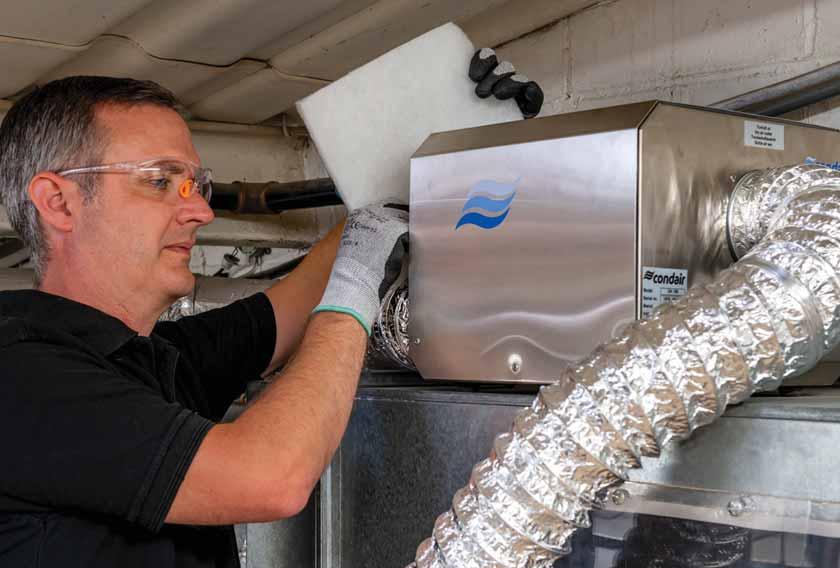



Due to the nature of condensing systems, they work better in warmer conditions, as more condensation occurs. This technology is ideal in rooms of 20°C or more and for projects that need to lower humidity down to around 45-50%RH. As the room’s temperature has no impact on the ability of the desiccant to adsorb moisture, it can be used in any temperature, making it a more flexible solution and ideal for cold environments. This technology can also lower humidity below 45%RH.



Installing a condensing system is potentially simpler as it only requires connections for power and drain. A desiccant dehumidifier doesn’t need a
drain but does need a duct to vent hot wet air away from the area being dried. To remove moisture from the desiccant rotor, a secondary hot airstream is passed through the rotor, which carries the moisture away to outside.
DA desiccant dehumidifier.
20 Building Services Engineering l January/February 2023
Dehumidifiers – a contractor’s guide
Pressure management must be considered whenever a dehum has ducting. Each model has a pressure rating and inadequate or excessive airflow through the system may reduce efficiency or cause wetting issues. As there are two airflows through a desiccant system, care must also be taken to avoid crossflow through the rotor. Installing short ducts on both intakes will allow for dampers to be fitted, which can help manage internal pressure and avoid cross flow issues.

Alongside pressure, temperature management must also be reviewed by the contractor. The thermodynamic principle of drying produces heat at around 680W per kg of moisture extracted. In addition to this, the mechanical elements incorporated into both technologies produce heat. Without assessing and controlling this, the area being dried can experience significant heat gain.
All too frequently the heat gain from dehumidification is countered by venting an area. However, opening windows or proactively bringing in outside air can reintroduce moisture and impact humidity control. For condensing systems, if the heat gain is too great, some units, such as the Condair DC-N, have a secondary condenser that can be located outside. This is similar to a split air con unit and allows the heat in the refrigerant loop to be remotely exhausted and the dry air delivered to the room at a precise temperature and humidity.
Heat gain in desiccant systems will be greater than condensing, as the “regeneration” portion of the desiccant wheel is heated to remove the moisture. This heat transfers to the process airflow as the rotor revolves, and so adds significant heat to the dry airflow. To counter this, a contractor can install a cooling coil before or after the dehumidifier.
Dehumidifier location is another important decision to be made early in the project. If the unit is placed inside the area to be dehumidified, installation can be simpler with less ducting needed to direct airflows. Air can be taken from the area being dried and then delivered directly back to it. Using the room air rather than outside air for the intake airflow can be more consistent in its
condition, and therefore lead to more accurate humidity control. Internal air often has less moisture than outside air, potentially resulting in a smaller dehumidifier being needed.














However, many other location and airflow configurations are available, including supply air being drawn from outside to over-pressurise an area and prevent air ingress. For areas that want a pressure-neutral arrangement with a desiccant system, the regeneration airstream can intake and exhaust externally, with the process air coming from and being delivered back to the room being treated. Understanding exactly what internal conditions are required by the client’s team will help a contractor liaise with the supplier to find the best location and airflow set-up. Many other questions also need to be asked by the contractor to determine the size of unit needed. To provide a dehumidifier with an adequate capacity, a supplier will need to know what the
required room condition is, the size of the space (and therefore air volume), and how much air exchange takes place in the area. This might be through open doors or windows, or via an air handling unit. If the area is naturally ventilated, air exchange estimates need to be made and knowing how many doors, their size and how often they open is essential information. In addition to these factors, the number of people in the area and their activities is required, along with any open sources of water. Giving this information to the supplier will allow a psychrometric calculation to be performed and a suitably sized unit to be offered. A quality supplier will be both able and willing to give advice on sizing information, along with all the other issues mentioned above. However, it greatly helps to avoid common pitfalls and deliver a successful project if these topics are considered as early as possible in a dehumidifier project.
Building Services Engineering l January/February 2023 21
DC condensing dehumidifier.
GENIOX - The next generation of air handling units



















Sometimes things just click. That happened when we created Geniox – the next generation of air handling units with a number of innovative solutions. In Systemair we think several steps ahead to make your life easier.
For over 25 years Systemair have been supplying air handling units into the Irish market and now we are very excited to introduce the latest model. Geniox is more than an air handing unit. It is the heart of a complete air handling solution that integrates everything from design to operation. The air commercial, hygiene, marine and industrial applications.
modern and modular air handling unit

Geniox modular platform is based on standardized an optimized solution regardless of your project and industry.



Product features at a glance:


www.systemair.ie
• • • design • • Access • • entire range
SystemairCAD
W

SystemairCAD. You can also try it yourself. It is free to download from our website. In SystemairCAD, you can optimise the air handling unit to your needs and to the lowest possible energy consumption.



Systemair GENIOX The air handling unit

This modular platform is based on standardized sections
ventilation solution where innovation, energy saving,

SystemairCAD The design tool
Geniox

a design program which ensures that every air handling unit is adapted for the actual conditions of each building. The software is free, easy to download, and it is easy for you to design the optimum Geniox unit yourself.
Systemair ACCESS The control system


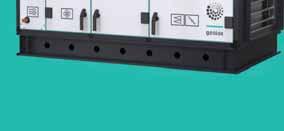
Systemair Access is a complete control solution for Geniox air handling units. It allows operators to optimize ventilation performance. It makes the advanced technology of Systemair’s air handling units easily accessible, helping you to create the perfect indoor climate.
 By Dr Eleonora Brembilla, Delft University of Technology and Chair of the TM68
By Dr Eleonora Brembilla, Delft University of Technology and Chair of the TM68

The importance of monitoring indoor air quality became glaringly clear in the past years, marked by a worldwide pandemic and multiple lockdowns that made us all reconsider our lifestyle, as well as the buildings where we live and work. Without need for such an extreme reason, we should all be deeply concerned with the daily quality of our indoor spaces, as that is where we spend most of our time.
Most issues with what we call Indoor Environmental Quality (IEQ) are actually not that extreme or sudden, but instead produce slowly-progressing discomfort or health conditions. People do not necessarily recognise that there is an issue until much later, sometime too late, or they do not have direct control on their surrounding environment, for example in open-plan offices.
Sustained levels of air pollutants might be odourless but causing headaches at the end of the day; poor daylight and views access might lead to eyestrain and possibly to more severe eye conditions if coinciding with the developmental phase of young populations; prolonged high or low temperatures can harm fragile individuals; and poor acoustic quality might severely affect the life of elderly people with hearing impairments. These are just a few examples of the long-term consequences that we might face if we do not consider – and monitor – IEQ properly.

Recent advancements in sensor technology made it possible to collect a





24 Building Services Engineering l January/February 2023 COVER
Committee.
STORY
much larger quantity of IEQ data than what we were used to in the past. Instead of visiting a building once or twice to do targeted inspections and surveys, usually triggered by severe issues already signalled by building occupants, it is now possible to install sensor networks that provide a much richer depiction of a building’s IEQ across time and space. The availability of smaller sensors means that they can be left in place, making it possible to monitor temporal variations over days, months, years.
HIGH PRESSURE HUMIDIFIERS


Condair high pressure humidifiers offer direct room humidification with a flexible range of options. A pump station can be combined with different nozzle systems to meet the installation needs of any project.

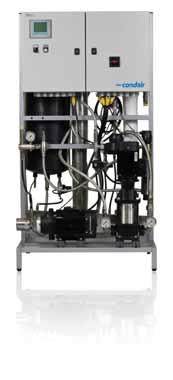
Also, the reduced costs of such equipment means that it can be installed in several places, providing spatial resolutions that more closely match those of each single individual present in the building. However, with big data comes big responsibility. The more the better is an approach that anyone could suggest but it is not an effective monitoring strategy. This is where the expertise of a building services engineer comes in. An engineer specialised in IEQ knows what the final goal of the monitoring is, knows what the implications for occupants are, and what sort of adjustments are needed to building services operation.
Ventilation rates should be increased; set-point temperature should be decreased; blinds closing schedule should be fixed; acoustic panels should be added; and so on so forth. With the right expertise,


Contact us for free expert advice
Tel: +353 (0)91 507120
Email: ie.sales@condair.com
Web: www.condair.ie

Building Services Engineering l January/February 2023 25
Dehumidification
Evaporative Cooling
Humidification,
and
+ FREE on-site
surveys
the improvement of IEQ levels can even go hand-in-hand with the reduction of energy consumption. CIBSE’s new TM68 offers an overview of the most important considerations to address when first attempting to monitor IEQ with sensor networks, in order to successfully transform data into knowledge and value.
TM68 approaches the topic of continuous IEQ monitoring by summarising the basic knowledge behind indoor environment measurement and by relating it to practical experience of monitoring existing in-use buildings. Four of the five parts that compose this new TM68 go over the main IEQ domains (Chapters 2-5): thermal comfort, air quality, luminous quality and acoustic quality.

Each of these sections present a general overview of basic quantities and units, instruments and sensors used for measurements – including their calibration – and practical recommendations about sampling strategies for successful monitoring
campaigns. At the end of each section, a number of case studies illustrates how IEQ monitoring was performed in existing buildings, how data was collected and analysed, and the lessons learned from these research and commercial activities.
The fifth part of TM68 (Chapter 6) focuses instead on how to manage these new sensor networks and the continuous stream of data that they collect. It provides a broad but technical “primer” for those of us less familiar with the hardware and software required for an efficient and unintrusive environmental monitoring system. This is where all the knowledge summarised in the previous sections comes together to provide an integrated IEQ assessment and where it combines with concepts of electrical and software engineering. Importantly, it also highlights delicate ethical questions such as the respect of building occupants’ privacy, the protection of data and networks from external intrusions, and the responsible (re)use of sensors and other electronic
components, which are packed with rare earth elements.
Throughout TM68, the combination of basic theory and practical examples is meant to help the reader answer questions such as: where can I place my temperature sensor so that it is not in the way of building occupants, but its measurements are still valuable? How often should I measure noise levels? Do the specs of my illuminance sensor meet the minimum requirements for my analysis? Should I store data locally or on the cloud? These, along with many other typical questions, are what need to be answered before embarking on a monitoring campaign.
While previously one had to search and read a number of disparate documents, we tried to collect these answers in a single technical memorandum that can steer readers in the right direction and offer them useful suggestions and references.
It is expected that a growing number of new and existing buildings will soon install monitoring systems with the capability of assessing IEQ conditions. The reasons outlined at the beginning and an increased tendency of green building certification schemes to require measurements during the operation phase seem to push in this direction. So, while it was not always easy to find appropriate case studies for this first version of TM68, we expect new case studies to be included in future versions.
New sensor technologies and new research findings on occupants’ preferences will contribute to a renewed understanding of monitoring data, which in turn will provide us with more evidence on IEQ. If we treat all this data cleverly and responsibly, and share it with each other whenever possible, over the years, we will build a collective database from which to draw new conclusions and design new solutions to improve indoor health and wellbeing for all.
26 Building Services Engineering l January/February 2023
Figure 1 – Monitoring and polling toolkit (BIT Station) used to measure illuminance, temperature, relative humidity, CO2 concentration and noise levels. (Courtesy Alessandra Luna-Navarro)
Muirfield Drive, Naas Road, Unit 1, Furry Park Industrial Estate, South Ring West Business Park, Tramore Dublin 12. T: 01 – 419 1919. Dublin 9. T: 01 – 842 7037. Road, Cork. T: 021 – 432 1066.
email: info@hevac.ie tenders@hevac.ie
www.hevac.ie

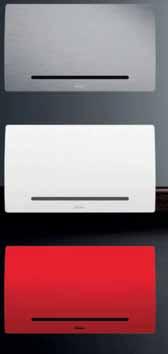
ART-U is the perfect fan coil for the perfect interior. Its versatility opens boundaries to unique characterisations, for solutions with great individuality. Air conditioning is now design-addicted thanks to Galletti’s innovative fan coil.
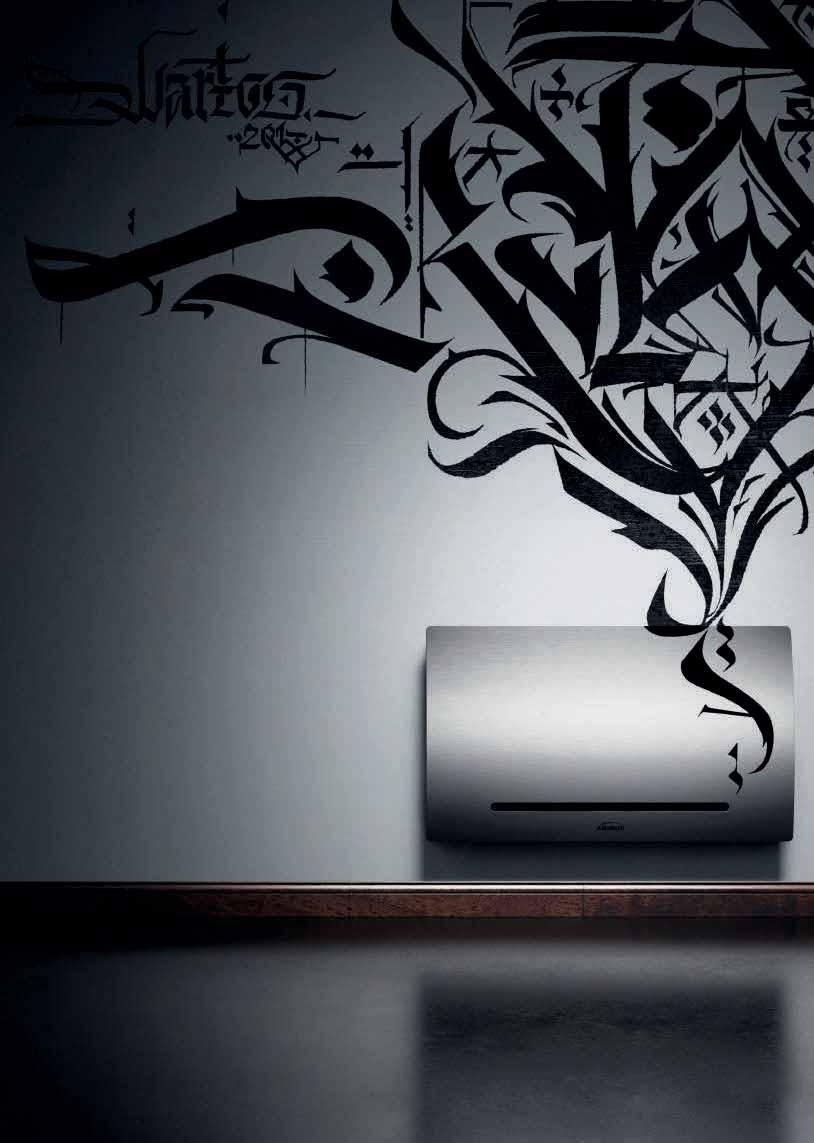 Art-U Black
Art-U Grey
Art-U White
Art-U Red
Art-U Black
Art-U Grey
Art-U White
Art-U Red
nanoe™X now available in stand-alone device
The new air-e from Panasonic Heating & Cooling Solutions is its first standalone, ceiling-mounted nanoe™X generator. air-e has a low power consumption and is ideal for a wide variety of applications where indoor air quality is a priority. This includes hotels, schools, care homes, hospitals, offices, restaurants, gyms, retail outlets and homes.
Improving indoor air quality is a top priority for Panasonic, and the new air-e nanoe™X generator has been designed to satisfy the many varied HVAC project needs on the market. The maintenance and service-free technology produces hydroxyl radicals (also known as OH radicals) – up to 4,8 trillion per second.
Abundant in nature, hydroxyl radicals have the capacity to inhibit certain pollutants, viruses and bacteria to clean and deodorise. Studies have shown that the nanoe™X generator can inhibit the novel coronavirus (SARS-CoV-2) and the influenza virus H1N1 subtype by up to 99.9%. nanoe™X technology can bring these incredible benefits indoors so that hard surfaces, soft furnishings and the
indoor environment can be a cleaner and more pleasant place to be, 24 hours a day, seven days a week.
Additionally, the air-e comes in a compact, modern and easy-to-install design, weighing just 1.1kg, and is super quiet at just 27 dB(A) for discreet operation. Panasonic’s air-e is also recommended for retrofit projects as it can be installed without complicated piping work.
One device is suitable for spaces around 20m2, offering powerful benefits. Multiple devices can be installed in a

room to ensure the air-e devices cover the entire area. The new stand-alone device brings nanoe™X benefits to spaces that have recent HVAC systems but do not have nanoe™X technology built-in.

Concentration Simulator
The nanoe™ X Concentration Simulator shows the distribution of nanoe™ X over time and its concentration level with expected benefits.
Huge amounts of nanoe™ X are distributed by the airflow of air conditioners and air purifier to actively fill the entire space. They create the necessary level of concentration based on the size of the space.
The decisive factors are the hydroxyl radicals. The more hydroxyl radicals are generated, the more benefits are expected. Details of how to access the Concentration Simulator are available from Panasonic Ireland.
Contact: Panasonic Ireland. Orlaith Gillen. T: 087 195 2573; E: orlaith.gillen@eu.panasonic.com; Clive Boyd. T: 087 690 9127; E: clive.boyd@eu.panasonic.com
28 Building Services Engineering l January/February 2023
Car Park Ventilation
SYSTEM DESIGN
We offer the greatest value to our clients when we are involved at the design stage. Our in-house team of designer and CFD experts are able to optimise the system to ensure the best design based on your specifications using our market-leading products.

ENERGY EFFICIENCY
We have a wide range of classleading JTv fans with ultra-high thrust and efficiencies. Modern energy efficient motors and advanced control systems make for a cost-efficient car park installation with top performance and safety levels.
COMMISSIONING & MAINTENANCE
With its team of skilled engineering specialists, FläktGroup ensures reliable operation and the highest performance of all ventilation systems. Services offered include commissioning, maintenance agreements, technology upgrades and after-sales service contracts.
See our website for sales: www.flaktgroup.ie
Contact number: (01) 463 4600
We take a complete life-cycle approach for optimal safety, efficiency and cost.
FläktGroup car park ventilation
Design input critical to car park ventilation
Whether for simple pollution control, smoke clearance and purging, or complete smoke control, almost every car park needs ventilation. Understanding why – and the different purposes ventilation can fulfil – is key to designing and specifying the right system for each car park.
Given the myriad of regulations and the huge variety of car park designs, understanding the issues involved in ventilating car parks is key to being able to offer the best solutions for each individual case, writes Gavin Power, Sales Director, FläktGroup Ireland.
“There are many different types of car park and each has its own ventilation needs. For example, an above ground car park, which will typically have open sides, will require less mechanical ventilation, as they are generally subject to natural ventilation (although this makes them susceptible to high winds).
Below ground car parks will require mechanical ventilation, consisting of

extract fans, jet fans or induction fans, with levels below the first basement ideally being fitted with a fresh air mechanical ventilation airflow supply.
Some below ground car parks take the form of complex tunnels, but often these are either too short or have too many joins and bends to be applicable to tunnel theory. So, a combination of car park design philosophies and tunnel-specific requirements may be needed when designing the solution. Standards compliance is also critical and it is essential that all applicable local and national regulations are factored in to the proposed solution. Standards can vary fundamentally and a case in point is the basis of calculating the specific pollution control ventilation rate. Some regulations require this to be worked out based on the overall car park volume or area, the number of car parking spaces, or even just the floor area. Others require that the ventilation rate is calculated based on the amount of pollution generated by vehicles moving around within the car park. However, during an actual fire, most regulations require an emergency smoke extraction rate to be based on a specific
number of air changes per hour.
Unlike traditional ducted systems, FläktGroup’s thrust fan system (JTv) removes the need for costly and space-consuming ductwork, with strategically-placed arrays of compact jet thrust fans precisely directing supply air (from inlet points) towards each extract point, so that a good level of ventilation is provided throughout the car park.
Supply air for such a system can be delivered in a number of ways, including via vehicle entrance or exit ramps, fresh air openings (grilles), or by using mechanical means such as air supply fans.
These systems are more effective than traditional ducted systems for providing pollution control, smoke clearance or purging, and smoke control in all but the smallest car parks. In addition, they deliver energy efficiencies, save space and, in the event of a fire, can ensure less smoke damage and better smoke containment. They also allow the car park to be brought back into use more quickly.
The benefits of enhanced design
Providing an enhanced design includes computer modelling of the project, embracing computational fluid dynamics (CFD) and advanced controls.
There are significant benefits to this approach, including a higher system performance with improved smoke control, lower installation and running costs, as well as lower installation costs for other services (because they don’t need to be routed around ducts, for example).
In addition, using enhanced design optimises car park space, potentially increasing the capacity of the car park, as well as giving a cleaner appearance and producing lower external noise levels due to being able to use lower powered extract fans.
Contact: Gavin Power, Sales Director, FläktGroup Ireland. T: 01 463 4600; E: gavin.power@flaktgroup.com
Left:
30 Building Services Engineering l January/February 2023
Using enhanced design optimises car park space, potentially increasing the capacity of the car park, as well as giving a cleaner appearance and producing lower external noise levels.


www.isopartner.ie
TEMPERATURE
INSULATION
INSULATION SOLUTIONS
HIGH
THERMAL
NOISE CONTROL PASSIVE FIRE PROTECTION
MESSAGE FROM THE CEO PADRAIG GILLEN


ISOPARTNER, the specialist technical insulation arm of the Belgian IPCOM Group, occupies a leading role in Europe as a provider of thermal, high-temperature, passive fire and acoustic insulation. In Ireland TIDL has long been recognised as the foremost supplier to the sector. Given the obvious synergies between the two, TIDL has now rebranded as ISOPARTNER Technical Insulation Solutions Ltd.
As part of the ISOPARTNER family we now have access to a large pool of research and technical resources and can bring these strengths to our customer base in Ireland. Our experienced team of insulation experts will devise the perfect insulation solution for your project, while our extensive stock holding and own transport fleet ensures speedy delivery anywhere on the island of Ireland.
We are distributors for all leading-brand suppliers to the sector with whom we have long-standing trading partner status. Complementing that is our in-house manufacturing facility. We offer a unique range of Irish-manufactured products, including specialist OEM cut insulation systems. We are also converters of leading insulation products and provide a “just-in-time” service to our own OEM customers.
At ISOPARTNER we contribute to a world that is sustainable, safe and comfortable. With our constantlyevolving technologies and innovative ideas, we deliver what we promise. We have only one goal – to meet our customers’ needs and to help them meet all relevant regulatory requirements.
Customer Service
Customer service is vitally important in how we engage with our clients. We regard them as partners and an integral part of our business. In Kevin Walsh we have a dedicated Sales Office Manager who is constantly on hand to take queries, help provide solutions and essentially make the interface with ISOPARTNER a simple, hassle-free process.





About IPCOM





IPCOM, ISOPARTNER’s parent company, is an ambitious and fast-growing European group of companies specialising in innovative solutions for thermal insulation, high temperature insulation, passive fire protection and acoustic insulation.



IPCOM employs over 1200 people and delivers its solutions through a network of over 69 outlets and 18 converter sites across 16 countries in Europe.
ISOPARTNER Technical Insulation Solutions Ltd is the Irish operation.







 Pictured below is the ISOPARTNER Senior Sales Team – Denis McGill, Passive Fire and Noise Protection; David Gillen, Thermal Insulation; Philip Mullen, HVAC Insulation; and Shaun Gillen, High Temperature Insulation.
Kevin Walsh, Sales Office Manager
Pictured below is the ISOPARTNER Senior Sales Team – Denis McGill, Passive Fire and Noise Protection; David Gillen, Thermal Insulation; Philip Mullen, HVAC Insulation; and Shaun Gillen, High Temperature Insulation.
Kevin Walsh, Sales Office Manager
ADVERTISEMENT FEATURE
THERMAL INSULATION

ISOPARTNER is Ireland’s premier converter and distributor of thermal insulation solutions for all types of applications. From low temperature insulation applications of -240ºC to highs of +1300ºC, ISOPARTNER supplies mineral fibre, phenolic pipe insulation and pipe supports, and nitrile products for HVAC and industrial applications.
ISOPARTNER’S conversion division supplies tailor-made insulation products to industry and the entire OEM sector. It also offers custom-made insulation kits for all types of applications, along with a “just-in-time” scheduled delivery service.
PASSIVE FIRE PROTECTION


When it comes to specialist fire-stopping products ISOPARTNER has no equal. Its comprehensive portfolio covers floor and wall fire compartmentation in facades and brickwork; cavity barriers in rainscreen constructions; service penetration seals in walls and floors; structural steel fire protection systems; and timber floor upgrade systems.
All products are fully-tested and certified to the relevant EN standards and CE marked where applicable. We offer online and on-site support via our experienced technical team who advise specifiers, engineers, builders and specialist fire-stopping contractors of the correct product for any fire-stopping situation. Our unrivalled technical support service allows for manufacturer-approved training courses, toolbox talks and advice on specific non-standard fire-stopping details.
HIGH TEMPERATURE INSULATION





ISOPARTNER has extensive expertise in the delivery of durable technical insulation solutions for high-temperature requirements. The extensive product range is complemented by full design support and technical assistance.





Specialised solutions are designed to withstand high temperatures in industries as diverse as process, ferrous/non-ferrous, ceramic, (petro-)chemical, energy, waste incineration and domestic appliances.

NOISE CONTROL

Noise control and reduction is now a critical element of building design and ISOPARTNER has a solution for all noise-related problems encountered in construction. Solutions offered include a vast range of products supported by comprehensive technical assistance.
Applications catered for include the control of impact and airborne noise of walls and floors; flanking noise in apartments, hotels, domestic housing, industrial and manufacturing concerns; and specialist noise control measures required in recording studios, cinemas, community halls and H&V plant rooms. We are happy to work with your acoustic engineer to provide a successful and efficient solution.
ISOPARTNER Technical Insulation Solutions Ltd.

















Dublin: Units 1-4 Keypoint, Rosemount Business Park, Ballycoolin, Dublin, D11 XP70 Tel: +353 1 8829990

Cork: Units 3A&B Ballycurreen Industrial Estate, Kinsale Road, Cork, T12 E279 Tel: +353 21 4966102


Email: sales@isopartner.ie www.isopartner.ie
 Top: The ISOPARTNER
fleet of vehicles ensures timely deliveries both locally and nationwide.
Left: Section of the warehouse distribution centre showing the extensive, ex-stock holdings at ISOPARTNER.
Centre: Overview of the manufacturing facility.
Right: Denis Buckley and Neil Tynan, who lead the Cork distribution centre.
Top: The ISOPARTNER
fleet of vehicles ensures timely deliveries both locally and nationwide.
Left: Section of the warehouse distribution centre showing the extensive, ex-stock holdings at ISOPARTNER.
Centre: Overview of the manufacturing facility.
Right: Denis Buckley and Neil Tynan, who lead the Cork distribution centre.
Commercial heating Mitsubishi Electric –
‘Applied’ umbrella reinforces quality of service
It has been almost two years since Mitsubishi Electric launched its IT cooling and central plant business in Ireland. In that time the company has overseen major changes to the operation of the business. Andrew McEvitt, Client Manager IT Cooling and Applied Solutions Manager, explains the significance of these changes, and how they further enhance customer service.

“We have rebranded the division as Applied which comprises of IT cooling, commercial heating and the chiller and central plant range. Additional staff and factory training gives us a great foundation for growth and we now have a full in house team behind us to help support customers in these areas.
“The commercial heating range has now been added under the Applied umbrella as it is very much complementary to our central plant offering. We have seen a surge of interest as commercial users and specifiers look to move away from fossil fuels towards renewable energy.
Traditional value
“Having worked in the applied sector for many years, it is clear to me that our mission should be to bring the traditional values of Mitsubishi Electric to the applied sector. These include quality, scalability, environmental responsibility, ease of design, consistency of application and ease of operation.
“The e-Series chiller/heat pump range is a prime example of this philosophy. This modular range spans 150 – 1080 kW cooling/heating, has a 5-year warranty to reassure clients, is readily available from stock and uses R32 low GWP refrigerant. This is an ideal solution for commercial, hotel and retail application.
“In addition, the Mitsubishi Electric
Hydronic & IT Cooling Systems (MEHITS) factories in Italy continue to develop products which will now proudly display the ‘3 Diamond’ logo.
“The new Mitsubishi Electric branded MECH/MEHP-iS range of chillers and 2-pipe heat pumps features class-leading SEER and SCOP performance. Built in Italy, it features the best of Italian engineering flair and Japanese ‘Poka-Yoke’ (mistakeproofing) quality. It encompasses a massive operating envelope from -12ºC cooling to 65ºC heating so is suitable for comfort, process and IT cooling applications. Watch out for more additions to the ‘3 Diamond’
branded Applied range coming shortly.
“The same MEHITS factories also build the RC range of IT cooling products, spanning chillers, free cooling chillers, CRACs, fan wall units and telecom units. This is the perfect blend of almost 60 years of Mitsubishi Electric experience in the IT cooling sector and the renowned Japanese reputation for quality and high production values.
Environmental responsibility
“One of the key drivers for Mitsubishi Electric is environmental responsibility. Innovative products such as the QAHV hot water unit using CO2 are just the start of the journey towards a lower GWP and lower PFAS future.
“Meanwhile, HFCs and HFOs will continue to play a part in the cooling and heat pump sector but we also expect R290 to feature strongly in the future for chillers and heat pumps. The QAHV is designed to provide sanitary hot water at scale, particularly suiting the hotel, hospital, multi-residential and commercial sectors. Users and specifiers can be assured that Mitsubishi Electric will be their expert guide in that journey.”
Contact: Andrew McEvitt, Mitsubishi Electric IT Cooling & Central Plant.
T: 01 419 8800; E: sales.info@meir.mee.com
Below: Attila Hegedus, Pre-Sales Technical Support Engineer with Andrew McEvitt, IT Cooling and Applied Solutions Manager and Tony Duffy, AC & Applied Technical Manager.
Building Services Engineering l January/February 2023 35



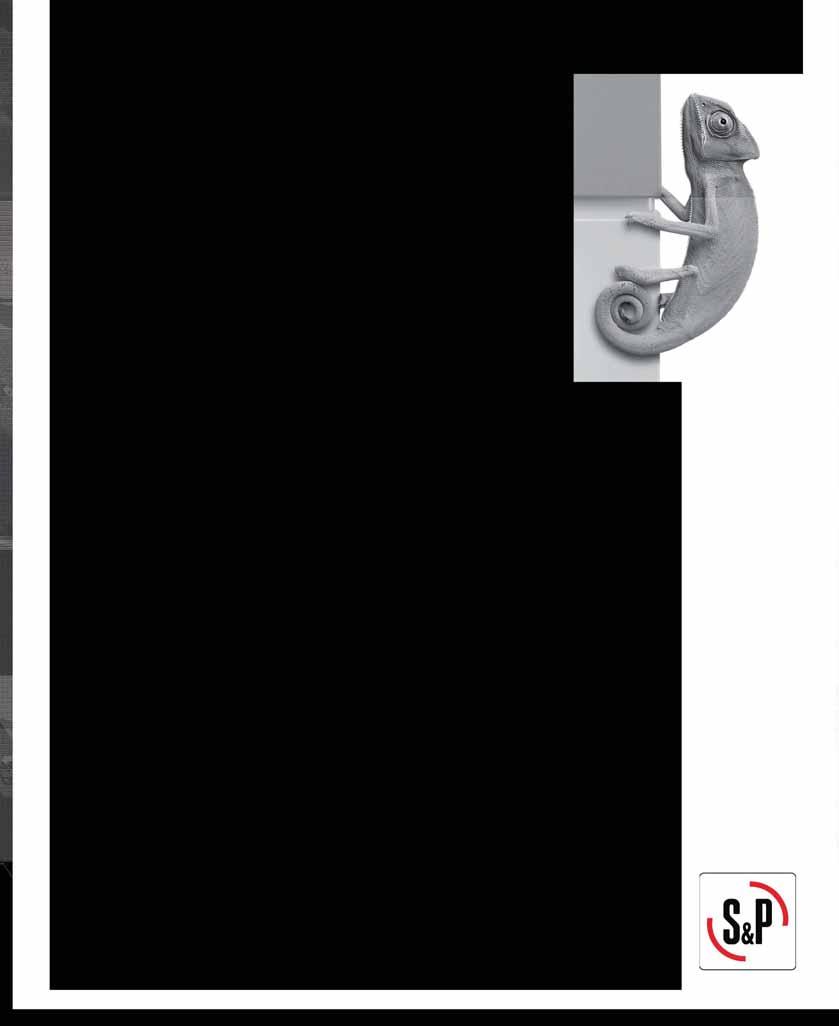
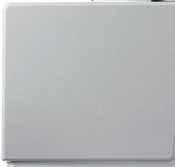

E: sales.ie@solerpalau.com T: 01 412 4020
FED UP WITH CONDENSATION AND MOULD?
A breath of fresh air for your home
Invigorating, energising and essential for wellbeing; fresh, clean air is the cornerstone of good health. But modern living means the air in our homes is often far from fresh.
ATMOS from EnviroVent brings fresh, clean air back into your home. As the fresh air circulates around your home, the stagnant, polluted air is diluted creating a healthier home and a healthier you.
Eliminate condensation and mould problems






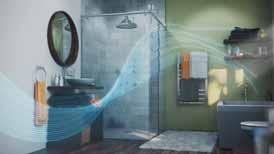

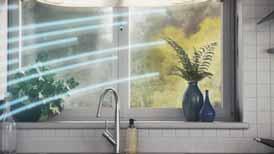




Remove musty odours
Help ease symptoms of asthma and eczema
Can help to reduce heating costs

Notice a difference within 48 hours of installation

E: sales.ie@solerpalau.com
T: 01 412 4020
Expert advice, sensible solutions www.solerpalau. 5
Bathrooms – sustainable, tiny, wellbeing and emotional

During ISH 2023, the “Pop up my Bathroom” trend platform will address four main themes – sustainable, tiny, wellbeing and emotional. It will present trend developments for small bathrooms, exploring the options for sustainable bathroom design, building a walk-through wellbeing studio and zooming in on the emotional side of bathroom design.
Sustainable Bathroom
This will be a top theme at ISH 2023, presenting sustainability in the bathroom as a future concept that strives for the optimal combination of smart, watersaving and energy-saving products; eco-friendly industrial production; sustainable materials; and enduring design. Simultaneously, it will convey a sense of being in touch with nature.



Tiny Bathroom
The trend towards compact bathrooms for urban homes has led to innovative solutions specifically tailored to small spaces. Distinguishing characteristics are a simple aesthetic; new, scaleddown product categories; smart solutions; comfort; and convenience. There is also a high degree of customisation.

Wellbeing Bathroom
Turning the bathroom into a private spa comes with the promise of regenerative time out with health-promoting benefits. Taking the bathroom as an important element for wellbeing, several other components play a role in addition to wellness such as mindfulness, taking time for yourself, being active, a neat and tidy home, eating healthily, simplicity. A wellbeing bathroom can play an important supporting role in supporting that.
Emotional Bathroom
Planning and implementing a bathroom is a complex process that has traditionally been determined by practical considerations. Now that the bathroom has evolved from a functional room into a lifestyle space, the real goal of bathroom planning is wellbeing. Sustainable equipment, LED technology, connectivity and the programmability of various functions are driving a more technical approach. However, the tech input is hidden with the visual impact based on colour, light and sensory appeal. The exhibition will also feature guided tours of the “Pop up my Bathroom” trend showcase.
38 Building Services Engineering l January/February 2023
ISH FRANKFURT, 13 TO 17 MARCH 2023
Combining performance and aesthetics Design driven fan coil units from Galletti
ART-U, the latest fan coil range from Galletti, represents a new approach to technological development that combines the perfect combination of performance and aesthetics. Galletti has always focused on the technical personalisation of its products and ART-U is a product on the cutting edge in terms of reliability, performance and energy efficiency.
Technical innovation is essential for the hydronic indoor unit market but it is not the only requirement. The latest trends in interior design, furnishings and personal décor are also important.


With ART-U, Galletti has unveiled a new concept of fan coil that meets both requirements. The front panel of ART-U becomes a veritable painter’s canvas, ready to be customised with every kind of colour, graphic, geometry and photographic image. In addition, there are “standard” finishes such as white, black, grey and red.
Further enhancing the aesthetics is the unique “disc-cover” fittings that can be used to elegantly conceal the water pipes coming up from the floor. The shape was purpose-designed to make installation quick and easy, even during cleaning and maintenance operations. The magnet coupling system allows their position to be adjusted according to the installation height and the position of the pipes. They are available in three different colours – white RAL9010, black RAL9005 and red RAL3020.
Increasing efficiency
On the technical front the units have a high-efficiency turbo coil-type heat exchanger. Made with copper tubing and aluminium fins, it is equipped with brass manifolds and a vent valve. The hydrophilic treatment is applied to the fins as a standard treatment. This increases their efficiency during cooling while, at the same time, providing greater
resistance to aggressive environments. The BLDC motor with inverter integrated in the fan assembly is standard on ART-U, ensuring low power consumption. In fact, the energy savings and consequent reduction in CO2 emissions, in comparison to traditional 3-speed AC motors, exceeds 70% in seasonal operation.
The most frequent situation in the seasonal operation of a fan coil is the one with partial loads where the effective air flow rate is lower than the maximum. It is under these conditions that it is important to assess the acoustic impact of the indoor unit in the air-conditioned space. The sound power of ART-U at the minimum operating voltage of its inverter never exceeds 32 dB(A), thus allowing the fan coil to be used even in residential areas or hospitality facilities.
Indeed, one of ART-U’s strongest advantages is its low noise level, an essential requirement for installation in bedrooms where it is recommended that sound power not exceed 40 dB(A) so as not to disturb sleep.
Contact: Chris Satell, Commercial, Industrial Heating & Ventilation Manager, Hevac. T: 086 102 1297; E: chris.satell@hevac.ie
Building Services Engineering l January/February 2023 39
ART-U is the first fan coil with an innovative customisable front panel.
Grant Engineering invests €13 million in new UK facility
Grant, Ireland’s leading engineering company which specialises in the plumbing and heating industry, has announced the official opening of its new UK Head Office representing a capital investment of €13 million.


The opening of these facilities follows two years after Grant opened the doors of its €14 million state-of-the-art expanded facilities featuring an R&D innovation centre in Birr, Co Offaly. This latest investment is due to the continued growth and success of Grant within the sustainable heating sector and will help pave the way for further growth.
At over 80,000 sq ft, Grant’s newest state-of-the-art facilitiy based in
Swindon, Wiltshire is three times the size of the previous premises in Devizes, Wiltshire, and offers additional office space and significantly-increased onsite storage capacity. It also enables further development of Grant UK’s Training Academy.
Commitment to growth
Speaking about the new facility, Stephen Grant, founder, Grant Engineering said: “We launched our UK operation over 25 years ago and it has gone from strength to strength. As a company supplying award-winning heating products to homes throughout the globe, this investment reinforces our commitment to growth as we continue to expand and enhance the
delivery of our sustainable heating technologies and services to customers.”
Dedicated to helping decarbonise home heating, Grant designs and manufactures a range of highly-efficient and sustainable heating products including HVO biofuel-compatible Vortex condensing boilers; Aerona3 R32 air to water, air source heat pumps; solar thermal panels; and integrated pre-plumbed hot water cylinders. In recent years the company has diversified its offering to include heat emitters –Afinia aluminium radiators and Uflex underfloor heating.
For further information you can visit www.grant.eu
40 Building Services Engineering l January/February 2023
Exterior of Grant Engineering’s new UK facility. Inset: Stephen Grant, founder, Grant Engineering
Galway University drives sustainability message


Congratulations are due to Michael Curran, Chair CIBSE Ireland and Head of Building Services, Energy and Utilities Buildings & Estates, Galway University on the success of Energy Expo 2023, which was held in the Baily Allen Hall on the university campus on Friday, 13 January.


The programme for the day was both varied and multi-faceted. It included 30 stand displays from industry suppliers; morning and afternoon speaker sessions aimed at professionals and the public; networking opportunities; and a special session for children (the engineers of tomorrow) which was hosted by Ciarán Ó hÓgartaigh, President, Galway University.
The format throughout was visitorfriendly. This made it easy for visitors to access experts with whom they could discuss everything from new-build and retrofit solutions through to SEAI grants,
One-Stop-Shops, the OPW’s Optimising Power at Work benefits, and Electric Ireland’s Beat-the-Peak initiatives.
Two separate opportunities were afforded to enjoy the Living Lab Tour. The engineering building at the university consolidates education and research activities in the various engineering disciplines into one building, which not only provides a learning environment, but in itself acts as a teaching and learning tool.
Essentially, the building serves as a “living laboratory” for engineering, where live data sets from numerous types of sensors
are being used to illustrate structural engineering and building performance concepts in undergraduate teaching, and in the development of full-scale research in structural engineering and energy.
This was a much bigger event to similar ones held previously and augurs well for further development in the future.
Building Services Engineering l January/February 2023 41
Ciarán Ó hÓgartaigh, President, Galway University, who officially opened the event.
Above: Talking to a visitor to the SEAI stand were Alessandra McConville and Brian McIntyre, both of SEAI.
Top left: Michael Curran with Patrick McHugh, Clár Éifeachtacht Fuinneamh, Leighanne Fay, KORE Retrofit and Jimmy Reaney, Clár Éifeachtacht Fuinneamh.
Bottom left: Reviewing the floorplan for the exhibition with Michael Curran were Senator Pauline O’Reilly, Chair, Green Party, Pat Lehane, Building Services Engineering and Lorraine Rushe, Environmental Manager, University of Galway.
All-industry strategy needed to maximise funding
Now that the EU has made 2023 the “European Year of Skills”, building services engineering – an early adopter of innovative technologies – should be pressing the Government to avail of the many support packages and incentives that are now on offer.
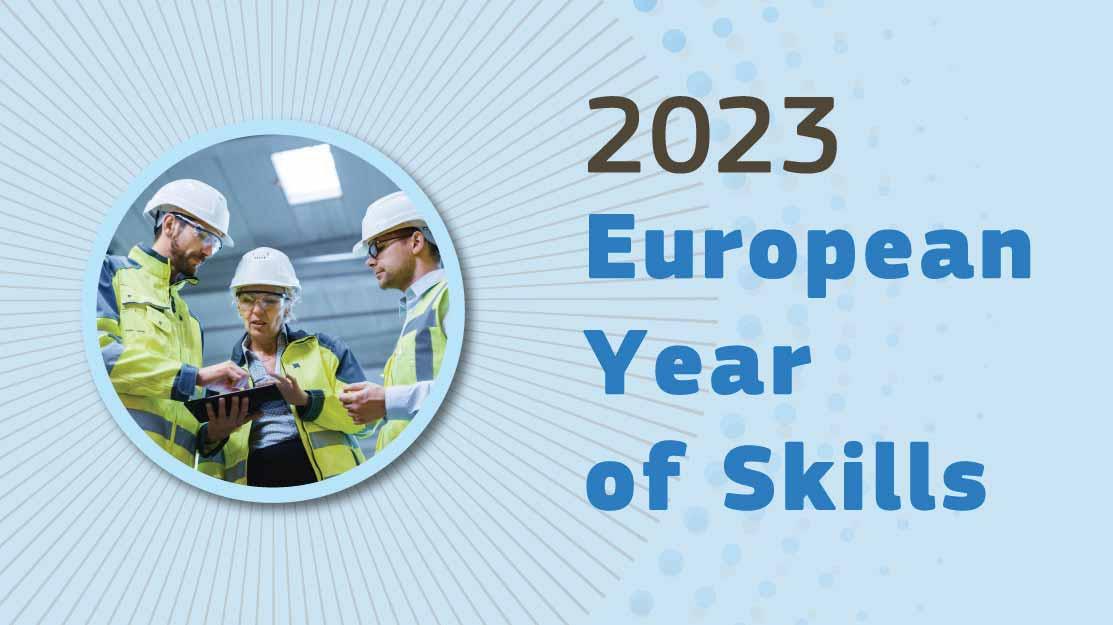
Significant EU funding and technical support is available to support member states’ investment in up- and reskilling, including:
• The European Social Fund Plus (ESF+) has a budget of more than €99 billion for 2021-2027. This is the EU’s main instrument for investing in people;
• The Recovery and Resilience Facility supports member states’ reforms and investments, including in the area of skills and jobs. In the national recovery and resilience plans endorsed by the Commission and the Council so far, around 20% of the social expenditure is dedicated to “employment and skills”;
• The Digital Europe Programme for the development of advanced digital skills has a budget of €580 million. It
provides strategic funding and supports the development of a skilled talent pool of digital experts;
• Horizon Europe underpins skills for researchers, entrepreneurs and innovators, notably through its Marie Skłodowska-Curie Actions, the European Innovation Council and the European Institute for Technology;
• Erasmus+ has a budget €26.2 billion. and it supports the personal and professional development of learners, staff and institutions in vocational education and training through funding mobility activities and partnerships for cooperation across Europe. It also funds European Universities which are pioneering the development of micro-credentials for training, up-skilling and re-skilling.
Additional programmes that can support skills development include the InvestEU Programme, the European Globalisation Adjustment Fund for displaced workers, the European Regional Development Fund, the Just Transition Fund, the European Solidarity Corps, the Programme for Environment and Climate Action (LIFE), the Modernisation Fund, the Technical Support Instrument, and the Neighbourhood, Development and International Cooperation Instrument.
Building services engineering should be at the forefront in availing of these supports, especially as digital transitions relating to sustainability, energy, the circular economy, carbon reduction and wellbeing are now the main priority. A workforce with the skills that are in demand also contributes to sustainable growth, leads to more innovation and improves competitiveness.
Building services engineering has already shown great leadership in driving skills development and the adoption of new technologies. With 2023 designated as the “European Year of Skills”, now is the time for all industry sectors to combine forces and devise a cohesive strategy to maximise the supports available.
42 Building Services Engineering l January/February 2023
CIBSE YEN GoQuest success










The latest CIBSE YEN CPD – combining learning and fun – was sponsored by Mitsubishi Electric with the first leg taking place in the training room at its Westgate Business Park headquarters. As per the nowestablished programme, the participating engineers were greeted on arrival by Mitsubishi Electric personnel and treated to a wonderful lunch before the actual presentation began.
Rachel O’Brien opened the formal proceedings before handing over to Margaret Rafter and then Shane Toye who, in covering the expansive Mitsubishi Electric portfolio, did so in the context of big picture issues such as sustainability, energy savings, carbon reduction, regulation compliance and net zero aspirations. This was followed by a very active Q&A session.
Next it was off to GoQuest where the party was presented with a choice of unique challenges, in many different rooms, to try and complete before time ran out. The objective was to get as many points as possible. Included were a mix of (light) physical, skill and mental challenges that tested the focus and determination of the participants, but also provided great fun.
Building Services Engineering l January/February 2023 43
Tony Duffy, Technical Services Manager, Mitsubishi Electric, explaining the finer points of Lossnay to some of the participants.
Main pic: Margaret Rafter, Consultant Sales Engineer.
Left: Shane Toye, Specification & Consultant Sales.
Right: Rachel O’Brien, Marketing Manager.
How smart water solutions can safeguard our buildings’ future
Extreme weather, flooding and environmental concerns are challenges which are becoming more pressing each year. Kevin Devine, from Xylem Water Solutions UK & Ireland, explains here how the latest water tech developments can prepare our buildings for whatever the future holds.

Here in Ireland, five extreme weather events were recorded during 2021 due to the escalating climate crisis, according to the World Meteorological Organisation, which warned that four key climate change records were broken that year1. In order to cope with these extraordinary conditions, scientists have advised that our country’s infrastructure, buildings, supply routes, public services, health system and work practices all need to be adapted.
There is a growing need for our buildings to rise to the challenge and protect both lives and livelihoods as events from heatwaves to flash flooding become more frequent … and their impacts more costly.
So, how can we future-proof buildings, including public amenities like hospitals and care homes, to prioritise the safety of our most vulnerable, in readiness for the capacity needed in years to come?
Smart steps to boost reliability
Technology is helping to drive prioritisation of safety in building systems of all scales, to protect both occupants and structures. A range of smart measures can create the most effective and reliable buildings, from improving management of wastewater
and stormwater to boosting the safety of drinking water.
The benefits are wide-ranging in terms of cost and precious resources: intelligent equipment capable of sensing environmental conditions to adjust its operation accordingly can bring energy savings of up to 70%, while advanced data analytics enable pre-emptive optimisation that allows systems to use water and energy in the most effective way.
Tackling the challenge of flooding Pumping systems for managing waste, stormwater and drainage to prevent flooding can be tailored for each individual facility, allowing for a future-roofed design to meet both current and predicted demands with consistently reliable performance.
Easy installation and serviceability are essential for any environment where downtime is not an option. The latest intelligent equipment is capable of sensing the operating conditions of its environment, adapting its performance in real time and providing feedback. In addition, self-cleaning technology can bring peace of mind while reducing operational costs by saving energy.
More efficient handling of wastewater
For any public building, handling wastewater safely and efficiently is a critical factor, particularly where added hazards may come from a medical environment such as a hospital site. Intelligent equipment can manage solids, fat, paper and other objects thanks to its innovative self-cleaning impeller that can lower energy use and reduce unplanned service callouts to avoid interruptions in service.
Protecting precious water supply
The latest developments in UV and ozone treatment have a growing role to play in tackling chlorine-resistant pathogens such as cryptosporidium. UV systems are among the most effective method for disinfecting bacteria from the water – the ultraviolet rays penetrate harmful pathogens and kill them, rendering them inactive.
Safety that ensures sustainability
Whether preparing for flooding or drought, our buildings have to become even more adaptable and resilient to ensure they cope with the changing needs of the populations using them, and the evolving environmental circumstances.
From better wastewater management to water disinfection that puts safety first, installing the most reliable and effective systems can safeguard the future. In addition, smart monitoring options mean building systems can be operated and supervised remotely if necessary, thus allowing potential failures to be predicted and rectified before they occur for even greater peace of mind.
See more information on water technology solutions across the lifecycle of use at https:// www.xylem.com/en-ie/
References
1. https://www.irishmirror.ie/news/irish-news/ five-extreme-weather-events-recorded-26998655
2 https://www.independent.ie/irish-news/ ireland-not-ready-for-more-frequent-and-extremeheatwaves-flooding-and-coastal-surges-expertswarn-41853920.html
44 Building Services Engineering l January/February 2023
Kevin Devine, Sales Director, Xylem Water Solutions Ireland
Optimising pump systems to save electrical energy

Given the global rise in energy costs, there has never been a better time to review and assess the efficiency of pumping systems – whatever their size, complexity or indeed sphere of operation. In this article, Steve Schofield (above right), Europump Executive Council Member, and past Chair of the international working group responsible for ISO 14414 (Pump System Energy Assessment), offers some basic information and guidance on purchasing, maintaining and designing pump systems for optimum energy efficiency, maximum CO2 reduction and best capital expenditure payback time. Pump systems account for 20% of the worlds electrical energy demand and between 25% to 50% of the electrical energy usage in certain applications.
Pump systems are the single largest user of electricity within industry across the European Union, consuming over 300 TWhpa of electricity which, in turn, accounts for over 65 Mton of CO2 emissions.
It is also well documented that rotodynamic pumps, which account for 80% of the installed base, are between 20% and 30% oversized. There is therefore a major potential to save energy if rotodynamic pumps are properly sized and operated. Here are some tips as to where to start.
To identify if a pumping system is sized correctly, make the following checks:
• Is it wasting liquid flow?
• Is it creating additional pressure?
• What is the monitoring and controls philosophy?
• Are there any oversized pumps installed for the required duty?
• Are there any significantly old pumps employed in the system?
• Is there excessive noise in the system?
• Are there any throttling valves installed in the system?
• Is the correct size of pipework installed?
• Inadequate maintenance lowers pump system efficiency, so what maintenance procedures are in place?
• Is there a proactive equipment replacement programme in line with current EU legislation?

Building Services Engineering l January/February 2023 45 PUMPS
Design and equipment
Understanding drive technology – use the latest EU regulations to achieve best possible drive efficiency with regard to:
• Variable speed drives (vsd);
• Integrated control and monitoring;
• Permanent magnet technology.
The vast majority of existing pump systems operating today were not originally designed with energy conservation as a major consideration. If pump systems are initially designed on an energy efficient basis, and the pumps are correctly applied and sized, the energy savings will often be in excess of 50%.
To design an energy-efficient pump system, all the following criteria should be considered:
• Basic plant layout;
• Pipe size, configuration and restrictions to limited pipework losses;
• Information on the liquid (viscosity, density, aggressiveness, temperature);
• System characteristics and pump selection;

• Pump/system control;
• How to avoid oversizing of the pump units;
• Selecting the most energy efficient pumps at the best efficiency point;
• Fitting VSDs to match the system design and demand.
Low energy costs are a direct result of knowing what the minimum flow and pressure that the system requires to operate successfully (system demand) is, and then selecting the correct sizedpump and matching it to the system.
When selecting a pump, it is important to determine the required flow and pressure to be generated by the pump. The flow may be determined by a process requirement, by the heating or cooling required in the system or by the peak water demand for utilities. The pressure
required may be to elevate the liquid within the system or to overcome the pressure losses in the system created as liquid passes through it.
It is important to know as much about the pump system as possible and to create a pressure/flow profile for the system. The energy required to drive the pump is directly related to the flow and pressure required. To generate high pressures generally leads to designs which may be inefficient. Therefore, it is important that neither the flow nor the pressure is over specified.
Variable speed drives
It is now readily accepted that significant energy savings have already been made by using variable speed drive and high efficiency motors. Generally, VSDs are used to continually adjust the speed of the pump to the demand.
The savings can be determined by the affinity laws:
Q = Flow, H = Head, P = Power and n = Rotational Speed

When building a new pumping system, most pumps are selected with a “safety factor” in play to satisfy potential future uprates, or to allow for wear in the pump or fouling of the system. Often there are many different parties involved in specifying and building a system and the safety factor can grow exponentially. This results in the pump delivering much higher flows than required. There may also be the need to vary the flow due to process conditions or varying heating and cooling needs within buildings.
Traditionally, throttling is used to regulate flow in a pumping system. While throttling reduces the flow, the motor is still running at full speed and works even harder as it is required to work against a restriction. By reducing the speed of the motor, the variable speed drive ensures no more energy than necessary is used to achieve the required flow. A centrifugal
46 Building Services Engineering l January/February 2023
Efficient, wellmaintained pumps are more likely to be reliable and unlikely to fail prematurely and cause loss of production or services.
“
Figure 1. Understanding system performance is essential.
pump running at half speed consumes only one-eighth of the energy compared to one running at full speed. Using an electrical variable speed drive is the simplest and most economic way of controlling the pump and matching it to the pump system.
Here are some key considerations when looking to optimise the energy use in pumping systems:
Has an alternative configuration been considered? – In some cases, moving from an existing pump layout to an alternative can offer energy saving possibilities;
Is pump performance monitored? –By looking for early signs of pump wear which can include increased noise, vibration or power consumption, major energy and maintenance savings can be achieved;
Ease of maintenance allowed for? –When designing or replacing pumps, ease of future maintenance requirements should be considered;
VSD considerations – When fitting VSDs to a pumping system, output and input filters should be considered, along with insulated motor bearings;
Maintenance – When maintaining pumping systems, it is recommended to use the original manufacturers’ recommendations and parts;
Reliability/security – Efficient, wellmaintained pumps are more likely to be reliable and unlikely to fail prematurely and cause loss of production or services;
Valves – Valves are considered to waste energy within a pumping system. However, if installed, they should be checked for correct operation.
Pumps not in use – Stand-by pump units or pumps with no demand should be switched off to save energy;

Working to best efficiency point? –
Rotodynamic pumps operating away from BEP not only waste energy, but also reduce the life expectancy of the pump; System alterations – When upgrading, changing, or expanding a pumping system, the demand may have changed and existing pumps may not be the most efficient solution;
Purchase the correct pump set –When purchasing a pump set, price should not be the deciding factor. If a pump is sized correctly the return on
investment is shorter. Likewise, if a pump is oversized and is wasting energy, going forward there will be this additional cost for the anticipated life of the pump set; Undertake regular energy checks – The installed base of pumps is ten times the amount that are sold each year. Energy audits in accordance with ISO 14414 can identify substantial energy savings in existing pumping systems.
When specifying a new pump choose a high-efficiency motor to be fitted. When replacing or rewinding a motor, then evaluate the cost of fitting a high-efficiency motor, remembering to factor in the running savings which will pay back any increase in cost. Invest in conducting an energy audit. Review client ability to pay utility bills and to understand the energy being using.
When to audit
Carry out an audit if:
• Energy bills are high;
• The pumps operate continuously;
• There are many pumps in the system;
• There are processes with varying flows;
• There are throttled pumps;
• There are pumps on bypass;
• There are noisy valves or pipework;
• Critical systems are subject to breakdowns.
The purpose of an energy audit is to reduce operating costs by reducing energy consumption. It is estimated that most companies can reduce their energy
consumption by 10% to 20%. Energy audits carried out in accordance with ISO 14414 have shown that savings from 30% to 50% are not unusual.
When deciding whether or not to carry out an energy audit, a good starting point is to assume that it will lead to savings of at least 10% of current energy consumption. Reviewing utility bills gives an indication of the savings to be made and the investment that should be put into the auditing process.
Across most industrial sites, some two-thirds of the overall total energy consumption is used to power electric motors. Furthermore, the overall cost associated with operating these essential pieces of equipment throughout their entire lifespan can be broken down as follows – 5% for the initial purchase/ installation costs; 10% for ongoing maintenance; and a massive 85% for the energy used to run them. Clearly, any reduction in the energy consumed by electric motors is important, and with modern designs that reduction can be as much as 30%.
It is also evident that many pumps and motors are constantly operated at full power, irrespective of process needs. That means there is the potential for significant energy savings across Europe’s installed base. These savings in turn drop to the bottom line and increase the profitability of any business.
Contact: Email: secretariat@europump. org or see https://europump.net/
Building Services Engineering l January/February 2023 47
Figure 2. Cost of pump ownership explained.
Ecovadis Platinum rating confirms Wilo’s sustainability credentials

With net zero now the “holy grail” rating for all building types, architects, building services engineers and their product/ system supply partners are driving initiatives that will deliver that objective. Wilo has been consistently to the forefront in this endeavour, developing products and pump systems that provide low carbon, energy efficient and sustainable solutions. This ensures compliance with national and EU regulations.
Wilo has been campaigning for energy efficiency for decades, especially as a high percentage of pumps currently in use are technologically outdated. As a consequence, there are enormous potential savings in replacing old uncontrolled pumps with modern high-efficiency pumps.
Hence the introduction of Wilo Energy Solutions, a service initiative that involves a site survey and applications evaluation that leads to the replacement of still-functioning but uncontrolled pumps with Wilo high-efficiency pumps.
With a long-standing reputation for delivering proven energy savings and with sustainability at the forefront of product innovation, Wilo is helping clients meet their net zero goals through the use of its energy saving audits at various heating, water supply and
waste water applications. By carrying out detailed site surveys Wilo can demonstrate how clients can significantly reduce energy usage and carbon emissions, as well as operation costs.
Wilo Group the platinum medal for sustainability in 2022 confirms its success in realising this objective. It had already received silver (2019 and 2020) and gold (2021) ratings. In fact, this is the first time the multinational technology group has received the rating agency’s highest award. Only one percent of the 90,000 companies assessed worldwide by Ecovadis achieve the platinum rating.
The Ecovadis rating is one of the most internationally-renowned sustainability ratings. Using a scorecard, the rating measures various indicators such as sustainable objectives, implemented activities, certifications or controlling measures. It also takes into account criteria along the entire value chain –from purchasing through to production and human resources management.
The platinum certification is among a number of prestigious awards that Wilo has received in recent years. For example, the Group received the German Sustainability Award for 2021 in the “Climate” transformation field and is also one of the prestigeous “50 Sustainability and ClimateLeaders” worldwide.
However, Wilo’s focus is not just on pioneering technology and applications efficiency. It takes a holistic approach to the entire product development process while embracing a truly sustainable model. That entails exacting criteria covering everything from the origin and sourcing of raw materials and electronic components through to manufacturing, packaging, delivery and circularity/recyclability.
The fact that the internationallyrecognised and independent rating provider Ecovadis awarded the
“Since its foundation in 1872, the Wilo Group has evolved from a hidden to a highly visible and connected champion. Sustainability has always been an integral part of our DNA. The platinum rating acknowledges our strategy and is a source of great pride,” says Oliver Hermes, President and CEO of the Wilo Group.
“The platinum medal shows how sustainably Wilo performs along the entire value chain,” says Derek Elton, Managing Director, Wilo Ireland. “We are proud of the excellent rating of our commitment to environmental protection. However, it is also an incentive for us to further pursue our strategy and improve our performance even more.”
48 Building Services Engineering l January/February 2023
Sustainable electric heating Switch to electric to save money on heating bills
With rising energy costs and dropping temperatures, heating is a concern for all, especially at this time of year. Electric heating offers users controllability and energy-saving features to ensure optimum comfort and that bills are kept to a minimum. Landlord Mode ensures that heating is only on when needed, and offers full visibility and control over all heaters.
How it works
Gain complete control and visibility of each heater remotely by using the ATC Heating App. By using the app, it is possible see:

• Whether the heaters are on;
• What setting they are on;
• How much energy they are using.
After a quick analysis of how the heaters are operating, the settings can be changed to ensure the best performance at any given time
When the property is occupied
Even when tenants are in the property, the landlord can still control the heating system. When Landlord Mode is activated, the only option available to the tenant is to boost the heater to a pre-set temperature. If required, this temperature can be changed remotely using the app. This takes away the opportunity for the tenant to turn the heater temperature up and leave it on for long periods. This is a significant cost saver.
If a property is occupied with the heater on and the tenant decides to open a window, then the open window function kicks in and turns the heater off, again saving energy.
When the property is unoccupied
The heaters automatically go into setback temperature mode, saving energy and reducing costs.
ATC range of electric heaters

ATC electric heaters can be installed in place of existing heating sources on site with no fuss and with minimum maintenance required post-installation. The entire range of radiators and panel heaters are sleek and modern in design, complementing any room décor, and designed to offer complete control to the bill payer.
Contact: ATC Ireland.
T: 01 – 467 8301;
E: sales@atc.ie; www.atc.ie
Building Services Engineering l January/February 2023 49
The ATC Heating App gives complete control.
ATC Thermal electric radiatiors. From left: Sun Ray, Lifestyle, Pacific RF and Merida RF.
System S has a maximum height of 865mm for the 10kW and 712mm for the 6kW outdoor units.
For detached and semi-detached homes, it has been developed as a low-carbon, high-efficiency system, with the indoor unit benefiting from plug-and-play installation and straightforward controls for intuitive operation. The system can function in outside temperatures as low as -25°C and produce hot water up to 60°C thanks to sophisticated inverter technology.

The System S was developed with environmental sustainability in mind, and
using R32 means the GWP is lower, thereby improving the building’s carbon footprint. The indoor unit has a compact footprint of 595mm x 600mm and contains everything for easy heating control within the building, including a 210l hot water cylinder.
Benefits of the System S
1. Available in two output sizes and equipped with modern inverter
technology to supply heating and hot water to new residential dwellings. This makes System S suitable for a range of applications;



2. System S produces low carbon hot water up to 60°C and remains operational in outdoor temperatures as low as -25°C. It offers cost-effective energy with a COP of up to 5 (A7/W35);
3. Control is via the Dimplex Home App which allows occupants easy control on the go. The premium version allows installers to access automatic notifications in the event of faults, graphical evaluation of device data, and troubleshooting help;
4. System S has a maximum height of 865mm for the 10kW and 712mm for the 6kW outdoor unit. The indoor unit has a footprint of just 595mm x 600mm and has been designed to be plug-and-play with key features and components integrated for rapid installation.
The System S is a complete split air-towater heat pump system that was designed with every modern solution in mind. It is perfect for new-builds wishing to reduce their carbon footprint. It also delivers topof-range heating and hot water solutions that are now easier than ever to manage with the new smart Dimplex Home App.
Contact: Glen Dimplex Ireland.
T: +353 1 842 4833;
E: salesireland@glendimplex.com; www.glendimplexireland.com
50 Building Services Engineering l January/February 2023
The new System S split air-to-water heat pump from Dimplex is a flexible and adaptable option for domestic, energy-efficient, hot water and heating control for newbuild properties.
System S: a complete split heat pump system from
Dimplex
The indoor unit benefits from plug-and-play installation and straightforward controls.
With so much at stake with regard to energy usage, carbon reduction, sustainability and the circular economy, clarity of thought with regard to decision-making is essential.

Building Services Engineering is where you powerful analysis from our team of knowledgeable industry experts.
www.buildingservicesengineering.ie
Facts in the face of … ILLUSIONS
See all issues back to 1961 at: https://arrow.tudublin.ie/bsn/
World first for Ethos Engineering Sensing the health of your space
Around the world, the COVID-19 pandemic has heightened public awareness of the relationship between health and wellbeing and the places where we live, work and play.
with airborne contaminants and support individual thermal comfort preferences;
• Water Quality Management: Enhance filtration and reduce water contaminants to encourage safer hydration;
• Light Measurements: Optimise lighting environments for visual acuity and to minimise disruptions to natural circadian rhythms, helping to improve sleep, productivity and focus;
• Acoustic Performance: Limit background noise and distractions to support employee productivity and engagement;
• Environmental Monitoring: Determine how a building is performing in real time by analysing sensor or onsite testing data;
• Occupant Experience: Collect feedback on how people experience a space.
Ethos Engineering’s journey to the WELL Performance Rating
Expectations
for
health leadership have shifted. Environmental, social and governance (ESG) performance and reporting has emerged as a powerful driving force in the market as investors demand accountability from organisations. Record levels of vacancy in commercial office spaces are reported as employees embrace hybrid work arrangements.
Equally, as so often happens in times of crisis, we are experiencing a period of enormous innovation. Nearly three billion devices will be installed in commercial buildings by 2025. The solution is clear – as people come to demand transparency from buildings they enter, third-party performance verification has the power to change the way we experience buildings.

With the WELL Performance Rating, the International WELL Building Institute (IWBI) has answered the call for a solution tailored to the needs of building owners and operators concerned about how their spaces perform and the implications for health. The WELL Performance Rating takes real data captured through sensor technology or onsite tests, and turns it into actionable intelligence to inform building design, operations and business decision-making.
Ethos Engineering is the first in the world to achieve the WELL Performance Rating at its Dublin headquarters in Sandyford.
The WELL Performance Rating targets 33 measurable, performance-based strategies from the WELL Building Standard across core focus areas that include:
• Indoor Air Quality and Thermal Conditions: Minimise risks associated
Müge Karasahin, Director of Sustainability at Ethos Engineering explains:
As an engineering company, we recognise that building technology advancements are increasingly becoming a priority for building owners and managers, and that they have significant potential to support business growth, employee productivity and wellness, and to tackle climate change. We believe smart technologies are one of the key answers for tackling today’s greatest
52 Building Services Engineering l January/February 2023 Display screen.
challenges and to prepare our buildings for the future. We see it as our responsibility to define and deliver sustainable and healthy design solutions that exemplify the level of leadership expected from us.
In order to stay ahead of the curve in this rapidly-evolving market, we unveiled our Living Lab at our Dublin office in November 2021. The Living Lab consists of an IoT platform, mobile tenant engagement application, and an on-prem sensor layer consisting of 13 environmental quality sensors, 110 desk sensors, six peoplecounting and one noise and light sensor. This data is captured, stored and visualised within our IoT platform.
The WELL Performance Rating launched at the perfect time for us. As a company that provides MEP, sustainability, wellbeing and smart building services, this was the perfect opportunity to leverage our in-house expertise. We wanted to pursue WELL Performance Rating based on the below benefits:

• Practising what we preach on healthy buildings;
• Providing a healthy environment to our biggest asset – the Ethos family;
• A deeper understanding and learning opportunities of the indoor environment;
• A Human Resources Tool –Internationally-recognised, third party-verified data on our office conditions;
• Fitting within our overall ESG strategies;
• Marketing and leadership – Targeting to be the first.
For Ethos Engineering employees, what this achievement really means is that our working environment is third-party verified to be healthier, safer and better for our employees and their health and wellbeing. We monitor conditions in our office and gather insights about employee experience to understand and adapt the environment to suit their needs. This investment in our employees’ health, wellbeing and safety is crucial in creating a workplace that people want to participate in.
For example, here are the indoor air quality sensors:

• Kaiterra Sensedge Mini, which measures:
– PM2,5 ( g/m³)
– PM10 ( g/m³)
– TVOC (ppb)
– Ozone
– CO2
– Temperature – Humidity
• Awair Omni, which measures
– PM2,5
– TVOC
– CO2
– Temperature
– Humidity
– Light levels
– Noise
Building Services Engineering l January/February 2023 53
Fourth floor Kaiterra sensor.
Mona Duff, Senior Manager, International WELL Building Institute (IWBI) presenting Müge Karasahin, Director Sustainability, Ethos Engineering with the IWBI WELL Performance Rating certificate.
Dwyer Series GSTA High Accuracy
Electrochemical Sensors
– NO2 – Nitrogen dioxide (ppb)
– CO – Carbon Monoxide (ppm)

• Ubiqisense – footfall sensors (peoplecounting)
• Spaceti platform – for data visualisation and displaying.
Our Living Lab is a testing environment. We want to try as many sensors as soon as possible to test the latest technologies, see how they work, and determine how accurate they are before we suggest them to any of our clients. Therefore, we want to go the sensor way when it comes to performance.
In the case of the measurement of carbon monoxide (CO) and nitrogen dioxide (NO2), after doing some research we found that there was no IoT device readily available that measured each of these gases. We decided to utilise our team’s experience and build our own sensors that could push the data to the cloud. We purchased calibrated Modbus sensors that usually connect to a BMS system and built a panel that converted the Modbus data to MQTT. This enabled us to push continuous data to our cloud platform in the correct protocol, resulting in the Ethos Living Lab being able to monitor CO and NO2 as per the WELL Performance Rating requirements.
Through intensive testing, we identified the following issues (not limited to) that required additional development from our partners to ensure data quality:
• Location-based sensor data inaccuracy;
• Carpark sensors – gateway line-of-sight connectivity problem;

• People-counting – field of view and marketing images counting;
• Network connectivity – cyber security;
• Mobile App – beta testing with colleagues;
• Sensor configuration with platform and signal conversion to MQTT. Our findings led us to make some pivotal changes to help improve the healthiness/ performance of our office space, including:
• Cleaners’ materials – changed to reduce TVOCs;
• Air flow increase – remove high levels of TVOCs;
• Activity-based working – space bookings;
• Platform development – data
visualisations and module expansion for ESG reporting;
• Additional sensor types – define performance differences;
• Device qualification – mitigate network cyber security issues;
• Manufacture collaboration – refine functionality/firmware accuracy;
• API development – increase data input/ extraction from IoT platform. Concluding, Mona Duff says: “IWBI is delighted to see Ethos Engineering pave the way for healthy and smart buildings and set a global example for the industry”.
Footnote
Any product references in this article are based on the consultant’s experience at Ethos and do not represent an endorsement from IWBI. All photos provided are based on products used for Ethos Engineering, the first project that achieved the WELL Performance Rating in July 2022.
About Ethos Engineering
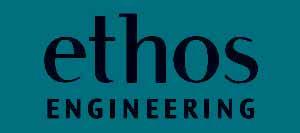
Ethos Engineering is one of EMEA’s leading providers of data centre mechanical and electrical design consultancy, sustainable commercial and smart fit-out buildings. Established in early 2005, Ethos Engineering takes a simple yet determined approach to providing mechanical and electrical consultancy services to a wide range of residential, commercial and retail developments. We search for the “wow” in everything we do.
About the IWBI
The International WELL Building Institute (IWBI) is a public benefit corporation and the world’s leading organisation focused on deploying people-first places to advance a global culture of health. IWBI mobilises its community through the administration of the WELL Building Standard (WELL) and WELL ratings, management of the WELL AP credential, the pursuit of applicable research, the development of educational resources, and advocacy for policies that promote health and well being everywhere. See also www.wellcertified.com Mobile App display.
•
54 Building Services Engineering l January/February 2023
Dashboard display.
Sustainability is key at Instantor New Instantor stainless steel press range from Sanbra Fyffe
The company continues to expand its range of quality Instantor fittings with the successful launch of Instantor stainless steel press fittings and pipe for gas and water. Instantor stainless steel press products are available in sizes 15mm – 54mm, with larger sizes up to 108mm also available on request for commercial or industrial applications.
As the industry focuses more on a sustainable model, with objectives like the 2030 Climate Target Plan at the forefront, the European Union’s ambition is to reduce greenhouse gas emissions to at least 55% below the levels seen in 1990. This means that all industries, stakeholders and individuals are required to play their part to help achieve these goals. The current and future focus is on reducing emissions and improving energy efficiency, along with utilising sustainable materials and manufacturing practices.
Benefits of stainless steel
Stainless steel fittings and pipe are commonly used on modern commercial and industrial building projects due to their quick and safe installation features. Stainless steel is a reliable source of material, even under severe conditions, and does not require a “hot works” permit. It offers substantial savings in time and risk when compared to traditional brazing and soldering methods, and provides a sleek finish, removing the need for additional painting or external protection.
Instantor stainless steel press fittings and pipe are designed and approved for use in potable water, gas supply, water-based heating, saturated steam, solar, sprinkler, compressed air, fire protection and industrial applications. The new range offers fittings that are DVGWcertified and WRAS approved, and gas fittings that bear the BSI Kitemark. The new range is also accompanied by a range of 316L stainless steel pipe, which is also DVGW certified.
Each fitting features an O-ring on each
connection which, when pressed correctly, delivers a water-tight seal in seconds. Instantor stainless steel press fittings are quick to install in just five simple steps – cut, calibrate, check O-ring, mark insertion depth and press.
Stainless steel fittings offer an aesthetic, hygienic appearance and are most commonly found in food and pharmaceutical industry applications. They provide a decorative finish, avoiding the need for extra paint or external protection costs, and minimum load loss
resulting in faster fluid flows. Stainless steel fittings are also corrosion, fire, heat and impact resistant, offering peace of mind to both the installer and the end-user.
Sustainability in mind
As an NSAI EN ISO 14001:2015 (Environment) certified company, Sanbra Fyffe is fully committed to environmental excellence and is continuously taking steps to improve its environmental performance. It makes sense that the new range of fittings, manufactured using 316L stainless steel, features sustainability at its core and offers long-term value.
Stainless steel is widely considered to be one of the most environmentally friendly metals used in construction as it is 100% recyclable. This is why Instantor stainless steel press fittings and pipes offer a sustainable solution for commercial and industrial plumbing projects.
Contact: Sanbra Fyffe – Instantor. T: +353 1 842 6255; E: sales@instantor.ie

Building Services Engineering l January/February 2023 55
Instantor stainless steel gas fittings.
Home to the iconic Instantor brand, Sanbra Fyffe is the market leader in the manufacture, wholesale and distribution of certified plumbing supplies to the builder’s merchants trade for over 85 years.
Inaugural awards for NetZero champions




Acapacity attendance of leading architecture, engineering and construction representatives was present in the Minerva Suite, RDS, just before Christmas, for the presentation of the inaugural Towards NetZero Ireland Awards. The awards were devised to help drive the net zero concept and to acknowledge and support those who are showing leadership in the net zero arena during this transitionary stage.
The scale of the net zero challenge is undeniably daunting but, the number and quality of the submissions entered for the awards demonstrate that the construction sector in Ireland is 100% committed to the net zero objective.

It also confirmed that all disciplines within the sector, be it architecture, building services engineering and actual construction,


are fully aware of the role each hase to play, and of the need for them to work together to achieve net zero status. All the winning entries demonstrated this holistic approach.

Categories
There were six categories in all –Retrofit, Commercial Building, Public Building, Design Practice, Housing and NetZero Champion. See below link to full list of awards’ recipients –www.netzeroawards.iey.
Sponsors



Category sponsors included Ecological Building Systems, Forbo, Kingspan Panels, Reynaers Aluminium and Soprema, while media sponsors are Architecture Ireland, Irish Construction News and Building Services Engineering.

Judges
Michael Curran, CIBSE Ireland Chairman and Head of Building Services, Energy and Utilities at NUI Galway; Mona Duff, Senior Manager at International WELL Building Institute (IWBI); Paul Martin, Programme Manager for Technical Standards Development, SEAI; and John Macken, Associate Director at O’Mahony Pike Architects.
Retrofit: Award – The Willows, Peter Nickels Architects: Mona Duff, judge with Peter Nickels, Peter Nickels Architects.
Design Practice: Award – Robert Bourke Architects: John Macken, judge with Anna Pierce, Robert Bourke Architects.
Retrofit: Highly-commended – Dockline (New Century House refurb, IFSC), Axiseng: Mona Duff, judge with Rachel McKenna, Axiseng and David Pearson, MCA Architects.
Commercial Building: Award – ESB Offices, Commercial Block, BDP: Mona Duff, judge with Chris Croly, BDP.
56 Building Services Engineering l January/February 2023
Commercial
Commended – Gas Networks Ireland Services Centre, Denis Byrne Architects: John Macken, judge with Tadhg Byrne and Maggie Moran, Denis Byrne Architects.
Commercial Building: Highly-commended – Wren Urban Nest Hotel, BDP: John Macken, judge with Harris Aminudin, BDP.
Housing: Award – Highfield Park, DTA Architects: John Macken, judge with Niall Rowan, Leanne Martin and John Maguire, DTA Architects.



Housing: Highly-commended – Kilbride Court, COADY Architects: John Macken, judge with Simon Keogh, COADY Architects.



Housing: Commended – Jameson Heights, ClearyDoyle: Mona Duff, judge with John P Doyle, Joint Managing Director, ClearyDoyle; Barry Dalton, Contracts Manager, ClearyDoyle; Diarmuid McGowan, Wicklow County Council and Michael Lysaght, Deaton Lysaght Architects.
Public Building: Award – Donegal Town Garda Station, Rhatigan Architects: Sean Neary, Varming Consulting Engineers with Gavin Phelan, Rhatigan Architects with Mona Duff, judge.


NetZero
Highly-commended – Jason Smith, Lawler
John Macken, judge with Jason Smith, Lawler Sustainability.
Building Services Engineering l January/February 2023 57
Building:
NetZero Champion: Award – Judges John Macken and Michael Curran with Tomás O’Leary and judge Mona Duff.
Champion:
Sustainability:
Trends to watch out for in 2023
With a turbulent 2022 behind us, it’s time to look ahead at trends that will shape the commercial, industrial and residential building sector in 2023. Unsurprisingly, energy is the overarching theme, along with carbon emissions reduction, writes Phil Kane, Country Manager, Eaton Ireland.
Energy shortages that emerged in Europe as demand picked up after the Covid crisis were deepened by the war in Ukraine, leading to an unprecedented supply squeeze. The outcome is ongoing EU and national efforts to boost energy security.
Reducing carbon emissions remains an equally pressing priority, with the United Nation’s COP27 meeting in November providing an urgent reminder – if one was needed – that while energy security is important, the need to mitigate climate change is an imperative. The building sector in Europe has much to consider as it responds to the demands that will be made of it in 2023.
Trend 1
Improved energy management
Governments are doing all they can to reduce energy demand. The independent think-tank, Bruegel, has prepared a country-by-country summary of the range of measures adopted which shows the diversity of approach: National fiscal policy responses to the energy crisis (bruegel.org). For building owners everywhere, the common thread is the need to manage energy carefully and differently.
Strategic use of energy storage systems will be a favoured option for many. With the benefit of energy storage, the business or homeowner can retain off-peak power from the grid, plus any energy they generate from renewable sources, to use how and when they wish. This shift in energyuse patterns, which was already emerging, has been accelerated by the energy crisis and associated high prices. Expect to see heightened demand during 2023 for energy storage systems.
Trend 2

Regulatory deadline

Action to reduce energy consumption is driven by regulatory deadlines, and efforts to deliver on deadlines will intensify in 2023. EU countries have
been tasked with implementing the Fit-for-55 legislative package, designed to drive entire economies towards a 55% reduction in net greenhouse gas emissions by 2030.
In addition, some requirements were revised upward in 2022 to support the REPowerEU initiative. REPowerEU will speed up Europe’s progress towards energy security through, among other things, enhanced levels of distributed energy generation from renewables. All of this will make 2023 a pivotal year because building owners will need to work out how to reduce both energy use and emissions.
Trend 3
Electric vehicles and renewables
Building owners are sometimes surprised when we discuss electric vehicle (EV) charging and renewables in the same conversation. It is not immediately obvious to them how EV charging infrastructure can boost the energy efficiency of a building. However, that is exactly what can happen thanks to sector coupling which involves linking energy production more closely with energy consumption and making very efficient use of renewable energy.
This type of approach – we call it “Buildings as a Grid” for commercial and industrial property, or “Homes as a Grid” for residential property –turns a building into an energy hub, something that is easily possible now. Expect to see more building owners taking this approach in 2023, as phase-out dates for petrol and diesel vehicles get closer.
58 Building Services Engineering l January/February 2023
After a turbulent 2022 …
Expect calls to become louder for national grids to permit bi-directional charging too, as the owners of EV chargers see how they could make money by selling energy to the grid. This is already allowed and popular in Norway.
Trend 4
Renovation and retrofit
Renewed focus on renovation will be a feature of 2023, as building owners and homeowners seek to reduce the impact of high energy prices by retrofitting insulation and assets such as solar panels. Extra incentive to retrofit will come in national regulations that will flow from
stock is renovated each year. Other European countries face similar issues.
Trend 5
Beating the skills shortage
Specialist electrical skills are lacking across Europe, so training workforces to install the infrastructure needed for the energy transition is a priority everywhere. The nations of Europe will need to strive harder in 2023 to ensure that the commercial, industrial and residential building sectors are supplied with the skilled workers needed for this process.
The delivery of strategies that will replace fossil fuels with a new energy

mix, which will be much more heavily weighted towards renewables, will demand a lot of infrastructure work … and people to do it. Automation and the adoption of efficient, repeatable work processes will help because it will enable fewer skilled people to achieve more.
Editor’s note: Building services engineers in particular are best qualified and positioned to take the lead in responding to these trends, and in devising solutions. While there are undoubtedly many challenges to overcome, the situation also presents many opportunities.
government initiatives such as the EU’s revised Energy Performance of Buildings Directive (EPBD).
Among other things, the EPBD wants countries to mandate EV charging in both new and renovated buildings to speed up the switch to electromobility. Most countries, both inside and outside the EU, are expected to introduce similar regulations if they don’t have them already.
Renovation has a vital role to play in the energy transition because approximately 35% of the EU’s buildings are more than 50 years old, almost 75% of the building stock is considered energy inefficient, and only about 1% of the building
Building Services Engineering l January/February 2023 59
LEDVANCE shines light on storage environments
LEDVANCE has introduced a range of lighting solutions to satisfy the unique requirements of production and storage facilities. Visual performance, comfort and ambience are key to such environments, and are impacted by the illumination level, quality of glare and brightness distribution of their lighting installations.
The lighting requirements in a storage environment are diverse and a flexible system that can be easily adapted to changes in working processes is essential. The TruSys FLEX DALI system from LEDVANCE is an ideal lighting control for entire buildings. It can manage over 1000 individuallyaddressed luminaires, across various rooms and floors, simply by using a pushbutton or app for smartphones/tablets.
Energy-saving LED technology provides continuous operation and homogenous light distribution, with tool-free, clickinto-place solutions for an easy installation. Flexible application is possible due to a range of different lumen packages and beam angles.

A typical high-bay warehouse is characterised by high ceilings, narrow aisles and hardly any natural daylight. In addition, the large difference in brightness

between indoor and outdoor areas produces a high risk of accidents in entrances and exits. Even from an exceptional ceiling height of nine metres, the LEDVANCE highbay DALI LED luminaires provide uniformly good illumination, and the daylight control of the DALI-2 drivers enables additional potential for energy savings.
The luminaires can be combined with VIVARES DALI light management, including presence and daylight control, for ultimate efficiency. For harsh industrial environments the luminaires carry increased shock resistance (IK08), are dust-proof, and have protection against water jets (IP65).
In a production environment, the demands for a lighting system are varied, from rough manual work to fine assembly activities and visual inspections. The LEDVANCE Damp Proof Gen 2 DALI meets all these requirements with its high protection against shock, dust and water. It is fitted with easy-to-open/close stainless-steel fasteners without sharp edges, and holes for anti-vandalism screws. In a recent installation by LEDVANCE, a production facility measured an increase in illuminance of 20%, coupled with an impressive 68% reduction in energy costs.
Loading areas can be particularly busy at night. With large trucks manoeuvring and goods being loaded and unloaded, the area quickly becomes crowded and difficult to keep track of. This makes lighting that provides orientation and safety all the more important. The LEDVANCE floodlighting performance is ideal for loading zones, as well as for facade illumination and lighting close to buildings. Energy savings of up to 90% can be achieved, compared to lighting with conventional technology, and the floodlight offers illuminance of at least 50 lux on average for busier areas. The floodlight also features strong robustness, including protection against moisture.
For facilities looking to retrofit LED lamps into an existing lighting solution, the LEDVANCE LED Tube range is an ideal first step. A stand-out product for production and storage environments is the LED Tube T8EM PRO, which has a full-glass portfolio to protect against bending and a shatterproof protection sheet. The product is VDE certified according to IEC62776 and low flicker according to EU 2019/2020 (SVM ≤0,4/PstLM ≤ 1). The instant-on light operates in combination with sensor technology and the lamp also works at low temperatures.
Contact: Stevie Young, LEDVANCE Ireland. T: 086 600 1291; E: s.young@ledvance.com

60 Building Services Engineering l January/February 2023
LEDVANCE lighting solutions are ideal to meet the diverse and challenging environments of storage and production facilities.
Lighting news
LAI to drive new EU sustainability objective
The incredible pace of lighting technology developments continues unabated and, while it brings with it many advantages and opportunities, the challenge lies in ensuring that lighting specifiers, designers and contractors understand and keep abreast of these developments. Similarly, EU legislation and regulation affecting the lighting sector is also developing at a rapid rate. Here again the challenge lies not just in the content, but in its interpretation and application.
Hence, the importance of Lighting Association Ireland (LAI) has never been greater. Now fully recognised as the representative voice for the industry, LAI has championed the interests of lighting on many fronts.

Apart from regular liaison and cooperation with other professional representative bodies in construction, LAI also engages with Government bodies and regulatory authorities such as the SEAI. Indeed, the association had a major LAI Pavilion at the SEAI Energy Show 2022 and the intention is to do something similar at the 2023 event in March of this year.
LAI also has a very strong education
programme. Education and training is now more important than ever as the skills shortage on the one hand, and the need for CPD points and continuous professional development on the other, impact more and more. The fact that the Dialux courses in the Spring were booked out reflects not just the demand, but also the value of this programme. Details of the next course – scheduled for Q1 of 2023, will be announced soon. Further strengthening the dissemination of vital lighting-related information, LAI website. This is freely accessible and contains a vast reservoir of critical information on industry news, design guidance, project profiles, regulation updates and pdf-format articles from leading industry experts.
“As the foregoing illustrates, LAI is not just a reactionary body but a proactive organisation and strong lobbyist at both national and international level”, says Gearóid McKenna, LAI Chairman. “Through our very active membership of LightingEurope we contribute to, and influence, EU legislation affecting lighting. We have delegates on quite a number of
important LightingEurope committees, while Gabriel Byrne, an LAI founding member, is now on the Executive Board of LightingEurope.
“Looking to 2023 and beyond, we look forward to championing the interests of the lighting industry on all fronts, and to promoting and strengthening its position within the framework and ambitions of Irish and EU sustainability legislation.”
Visit: lightingassociation.ie.
Building Services Engineering l January/February 2023 61
LAI has had a very successful year and looks forward with confidence, notwithstanding the unpredictable impact of world events, to an equally-successful 2023.
Through our very active membership of LightingEurope we contribute to, and influence, EU legislation affecting lighting.
“
– Gearóid McKenna, Chairman, LAI
SLL lighting design guides
LG22 – Lighting for control rooms (2022)

Control rooms can be complex, having many operators with their often extensive arrangement of screens around them and perhaps large overview screens on walls in front of them. Many rooms operate 24 hours a day, some monitoring and controlling safety-critical operations. For these reasons establishing the geometry between operators, their screens, larger remote room displays, and the lighting and any windows is crucial.
Designing the lighting, daylight admission, sunlight control and lighting control systems requires discussion and cooperation between the lighting designers and others involved in the design of the room. If the power to the normal lighting fails in control rooms, monitoring life- or safety-critical operations normally
requires full or partial standby lighting throughout the room. As this will be supplied from UPS and/or standby generators, early discussion with the electrical designers is vital.
Once all building, electrical and display screen/user parameters are established, the design of the lighting, and possibly daylight control, can be carried out. As well as making sure no bright images are visible to the users on any of their screens, the room lighting needs to provide a constant minimum level to ensure the operators remain alert – this is most important during the night shift where there may be an increased risk of operators becoming sleepy if the room lighting is dim.
LG9 – Lighting for communal residential buildings (2022)
This third edition of SLL Lighting Guide 9: Lighting for communal residential buildings, includes detail of new types of multiple-occupancy building, the latest findings on the effect of lighting on wellbeing, and advice on how to minimise obtrusive light from external lighting. All sections have been updated to reflect the switch to LED light sources.

This guide is for the use of anyone involved in specifying luminaires and lighting systems for multi-occupancy residential buildings. It aims to provide practical guidance and demonstrate good practice.
Those responsible for communal residential buildings have to consider
energy efficiency, safety and security, as well as the welfare of people who live there.
This guide provides practical guidance and demonstrates good practice with recommendations on how to meet statutory requirements while achieving a pleasant ambience for residents in their living areas.
Multi-occupancy residential buildings consist of all building types, from rented or private apartments through to student accommodation, social housing, schools, sheltered housing, nursing homes, hospices and many other types.
Get your copy
Copies of these guides are available free to CIBSE members and to purchase by non-members. See www.cibse.org
62 Building Services Engineering l January/February 2023
Another side of … Anothersideof…

Louise Mernagh, Mitsubishi Electric
Despite opting for a career in accountancy, Louise Mernagh, Financial Accountant at Mitsubishi Electric, is still very much involved in the competitive side of representative golf. She only took up the game at 14, because her friend did, but in the space of five years she was playing off scratch and had already been named Woodenbridge Golf Club Ladies Player of the Year five times in a row. During this time she also set the current course record in Woodenbridge which was equalled (but not beaten) by Leona Maguire two years later.

Aformer student of St Mary’s College, Arklow, she then went on to study at NUI Maynooth as part of the Paddy Harrington (father of Pádraig Harrington) Golf Scholarship Scheme. She was one of the first four women golfers accepted into the scheme. She had been considering attending college in the US, but was persuaded to stay at home by the NUI scholarship program where she studied for her degree in finance and management. Under the scholarship, Louise trained at the Golfing Union of Ireland (GUI) Golf Academy at Carton House in Kildare. She has represented Leinster and Ireland at various levels, including an appearance at the British Open Amateur tournament, the World University Games in China, and other prestigious tournaments throughout the world.
During this time she played in the company of Ireland’s other emerging leading ladies golfers, including the Maguire twins, Leona and Lisa. However, having witnessed at close range the gruelling reality of the professional golf circuit, she decided the pursuit of a professional career was not for her.

Having graduated from Maynooth, she had a number of part-time roles which allowed her continue to play competitive golf at international and interprovincial level before settling into a career in finance. She completed her full ACCA qualification in 2021 while gaining valuable experience working under the Head of Finance and Operations in Mitsubishi Electric. Nonetheless, the lure of golf and her hunger for the competitive side of the game persisted. She has been a member of Elm Park Golf Club now for over a decade and throughout that time has represented the club at all levels. She was part of the Elm Park team that won the AIG Women’s Senior Cup in 2021 and subsequently went on to play in the European Ladies’ Club Trophy at Golf de Fontainebleau.
Last year was not as successful but Louise is quietly confident for the coming competitive season. There are some very strong golfers on the ladies Elm Park team and Louise is currently undergoing a dedicated training regime, that includes gym work and practice, to ensure she earns her place Best of luck for the new season Louise.
Building Services Engineering l January/February 2023 63
Louise Mernagh, Financial Accountant at Mitsubishi Electric, and representative amateur golfer.
Welcome back Richie
As 2023 gets underway it’s great to see that Richard Sherlock has re-joined the sector. Still, I expect we won’t see much of him in Ireland, initially at least, as his new role is European Product Leader – ATW at Haier Europe.


Congrats Martin
Congratulations to Martin O’Brien who has been conferred with a First Class Honours Degree in Sustainable Engineering. Martin is an excellent example of career progression … he started on the tools with a Level 6 qualification; went in to technical and sales support while gaining a Level 7; and then went in to academia and gained the recent Level 8 award while working as a lecturer in TU Dublin. He is pictured here with his daughter Emma and son Josh.
Not an ill wind …
A recent report by energy specialists Baringa reveals that without wind energy, Ireland would have had to spend an additional €1.65 billion on gas for power generation in 2022, along with an extra €340 million on carbon credits, to produce electricity by burning that gas.
Keeping it in the family
Congrats to Nicola Ring, daughter of Daniel at Lawler Sustainability, on receiving her Masters in Sustainability Engineering recently. Proud dad says it is great to have her in the company.


Daniel also credited the South East Technological University (SETU) for offering great apprenticeships and blended learning courses to help with the upskilling the climate transition requires.
Making wishes for children come true
Mitsubishi Electric has been an active Corporate Partner of the Make-A-Wish Foundation since 2016, helping the charity grant wishes for children battling lifethreatening medical conditions. The Christmas appeal is a major initiative and Mitsubishi Electric returned as the leading corporate Christmas support sponsor for 2022.
Ciaran Moody, General Manager at Mitsubishi Electric Ireland said: “CSR initiatives are an integral part of our activities and our journey with Make-A-Wish Ireland is based on feedback from our employees who deeply care about this cause.”
Our photo shows Ciaran Moody, General Manager, Mitsubishi Electric Ireland with Susan O’Dwyer, CEO, Make-A-Wish Ireland.

Treanor rising star

John Treanor has been promoted to Senior Sustainability Engineer at Passive Dynamics. Since joining the company in February 2021, John has grown into his current role, expanding his knowledge base significantly and managing projects from design stage through to final client handover.
John, a word of caution … now is when the hard work really begins!
PAT LEHANE




















































































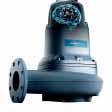




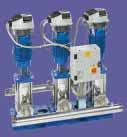


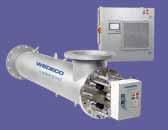





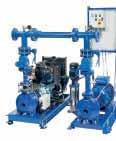







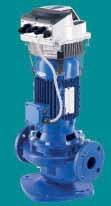


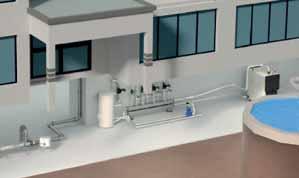






www.xylem.com Wastewater & stormwater Water supply & pressure boosting HVAC - Heating, ventilation, air conditioning Fire protection Today, most of our buildings have a significant negative impact on our environment and climate change. Let’s change this together by building sustainable buildings with reduced energy, CO2 and water footprints.
Building Solutions
Take control of your low carbon future
Switch to a Panasonic Aquarea heat pump system for an energy efficient and green future.
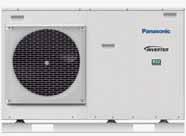
With Aquarea up to 80% of the heat energy required is taken from the ambient air.
• Wide range of capacities to suit all homes (3kW to 16kW)
• Highly energy effi cient solution
• A+++ rating
• For use with radiators, fan coils or underfl oor heating
• IOT Smart remote controls


• Environmentally friendly
• Impressively low noise levels
If interested please scan the QR code or phone one of the team on or :

Reduce carbon emissions Simple and easy online design tools to calculate the optimum capacity for each house design Highly energy efficient heating, cooling and hot water provision A+++ at 35ºC and A++ at 55ºC A+++ A++
























































































































































































 By Dr Eleonora Brembilla, Delft University of Technology and Chair of the TM68
By Dr Eleonora Brembilla, Delft University of Technology and Chair of the TM68











 Art-U Black
Art-U Grey
Art-U White
Art-U Red
Art-U Black
Art-U Grey
Art-U White
Art-U Red



























 Pictured below is the ISOPARTNER Senior Sales Team – Denis McGill, Passive Fire and Noise Protection; David Gillen, Thermal Insulation; Philip Mullen, HVAC Insulation; and Shaun Gillen, High Temperature Insulation.
Kevin Walsh, Sales Office Manager
Pictured below is the ISOPARTNER Senior Sales Team – Denis McGill, Passive Fire and Noise Protection; David Gillen, Thermal Insulation; Philip Mullen, HVAC Insulation; and Shaun Gillen, High Temperature Insulation.
Kevin Walsh, Sales Office Manager
























 Top: The ISOPARTNER
fleet of vehicles ensures timely deliveries both locally and nationwide.
Left: Section of the warehouse distribution centre showing the extensive, ex-stock holdings at ISOPARTNER.
Centre: Overview of the manufacturing facility.
Right: Denis Buckley and Neil Tynan, who lead the Cork distribution centre.
Top: The ISOPARTNER
fleet of vehicles ensures timely deliveries both locally and nationwide.
Left: Section of the warehouse distribution centre showing the extensive, ex-stock holdings at ISOPARTNER.
Centre: Overview of the manufacturing facility.
Right: Denis Buckley and Neil Tynan, who lead the Cork distribution centre.






















































































































































































